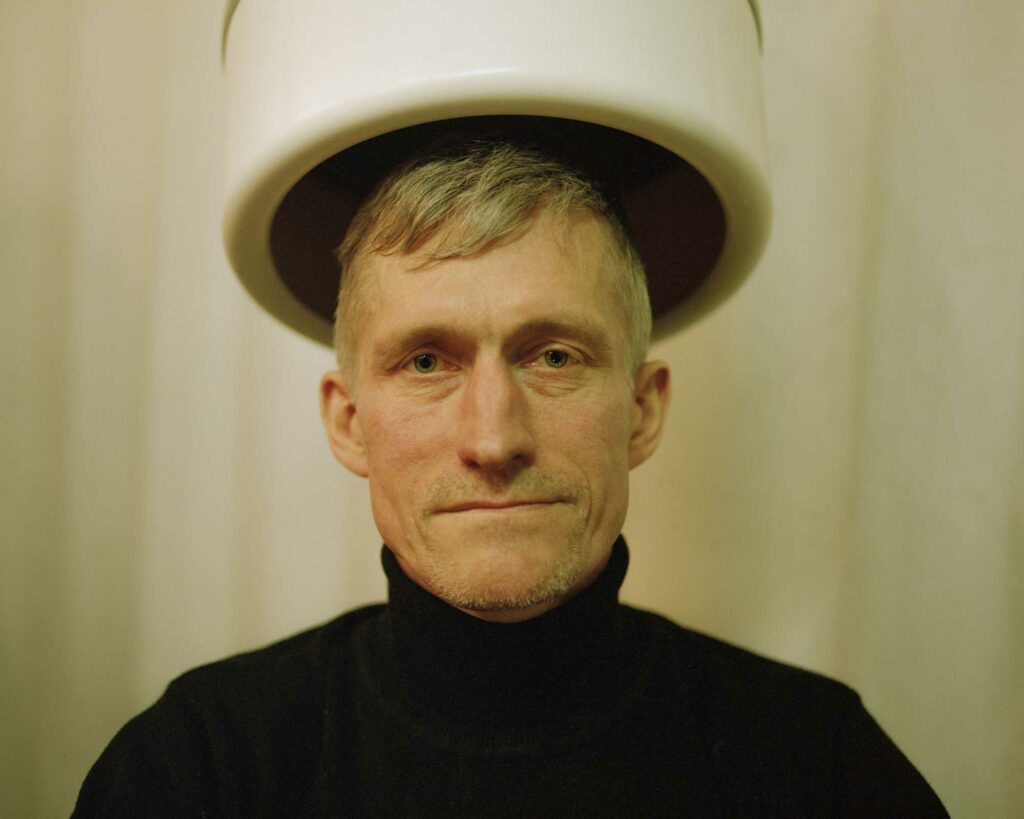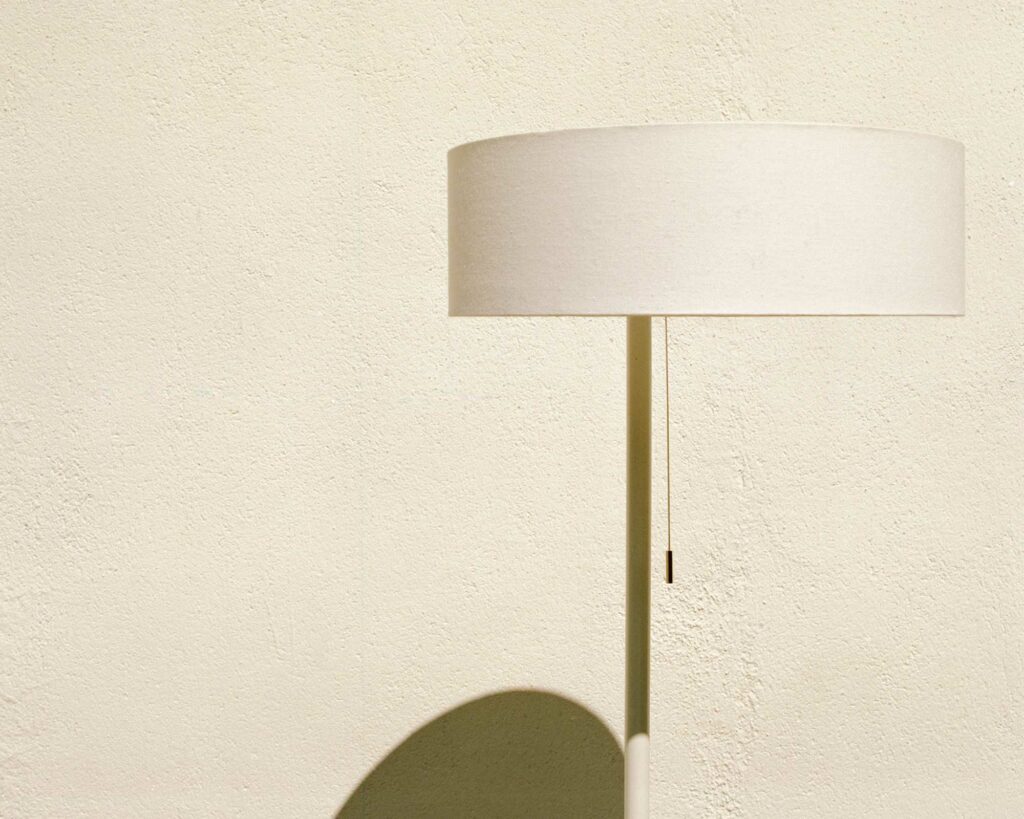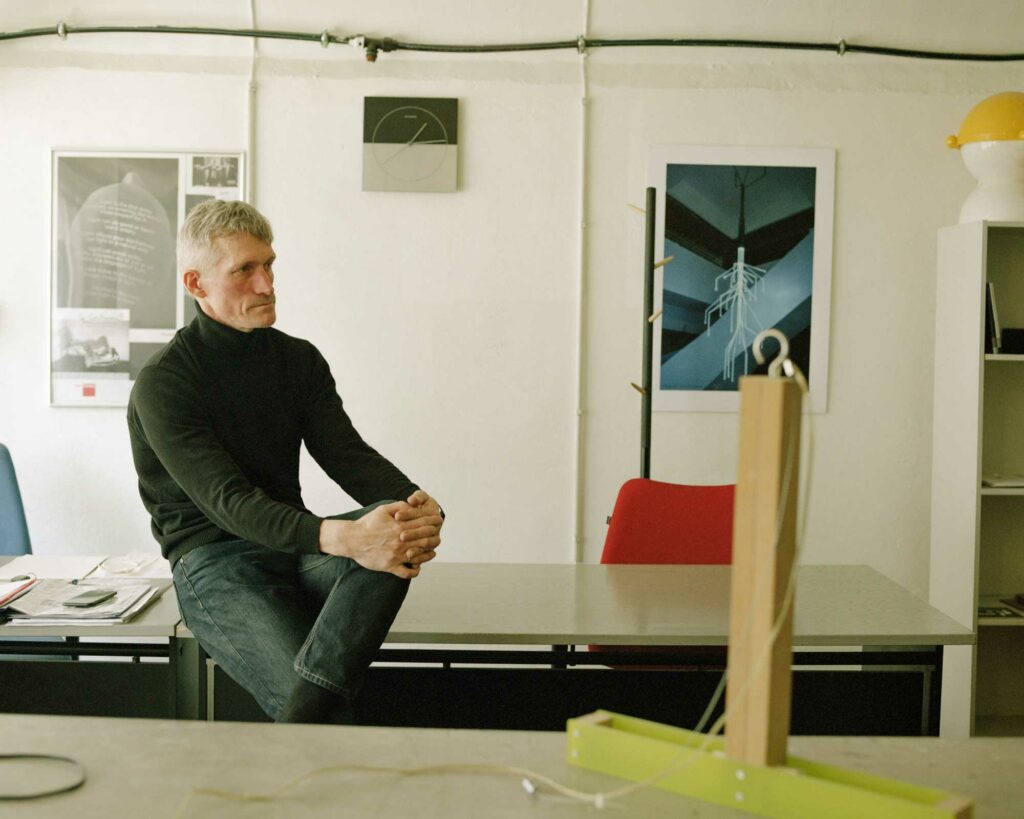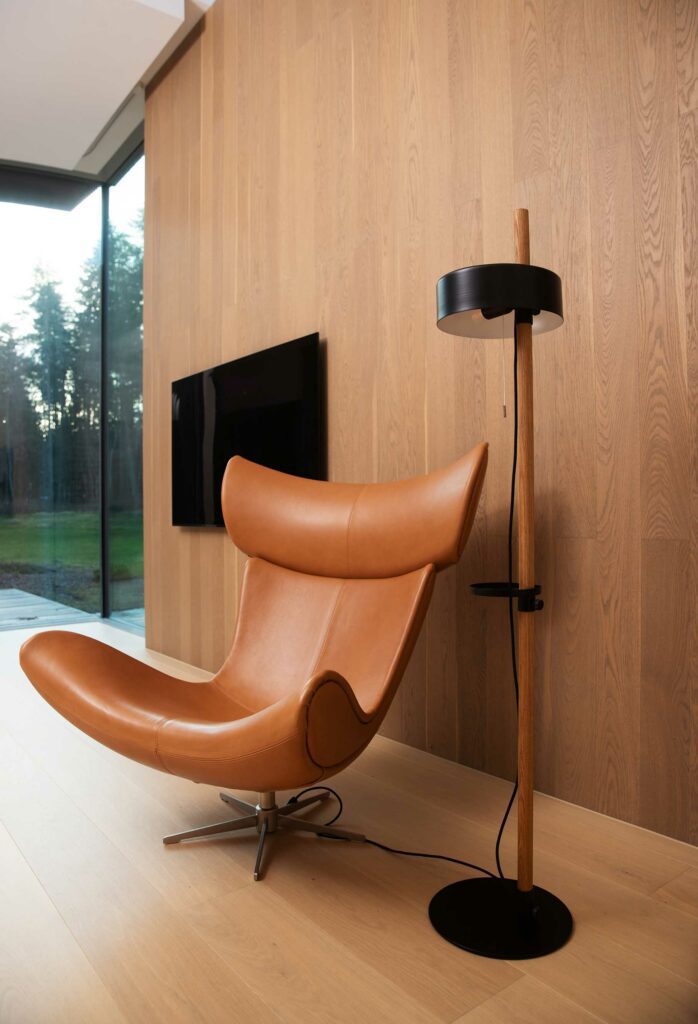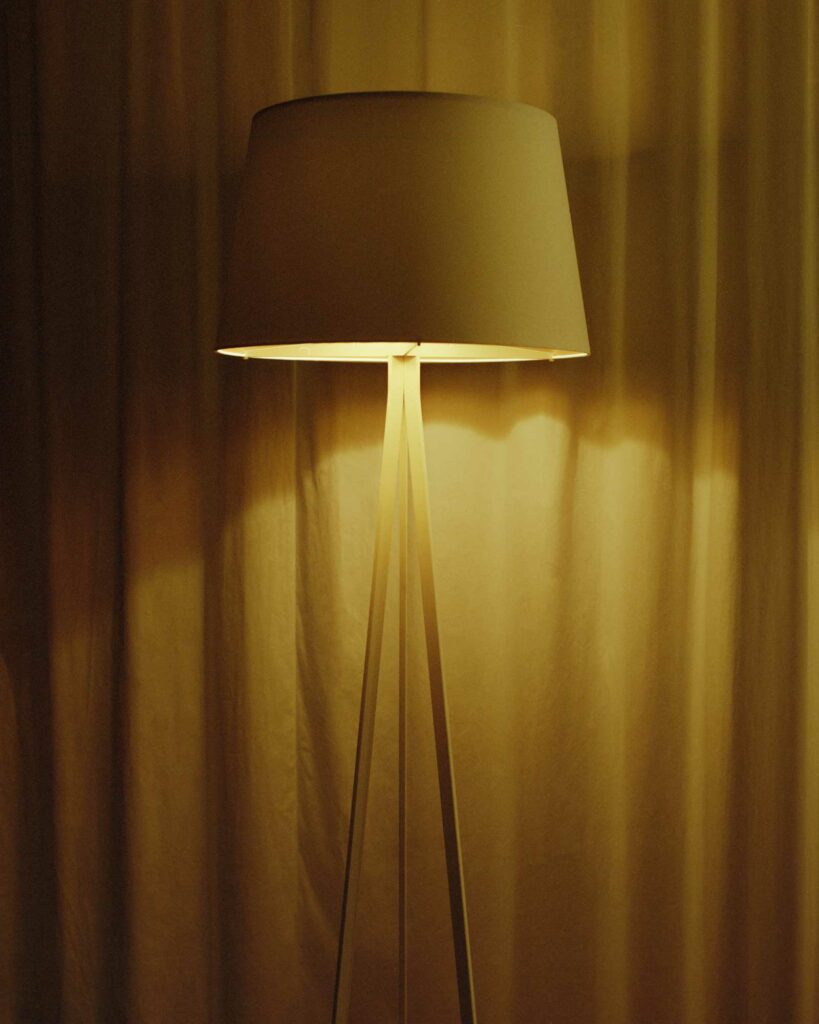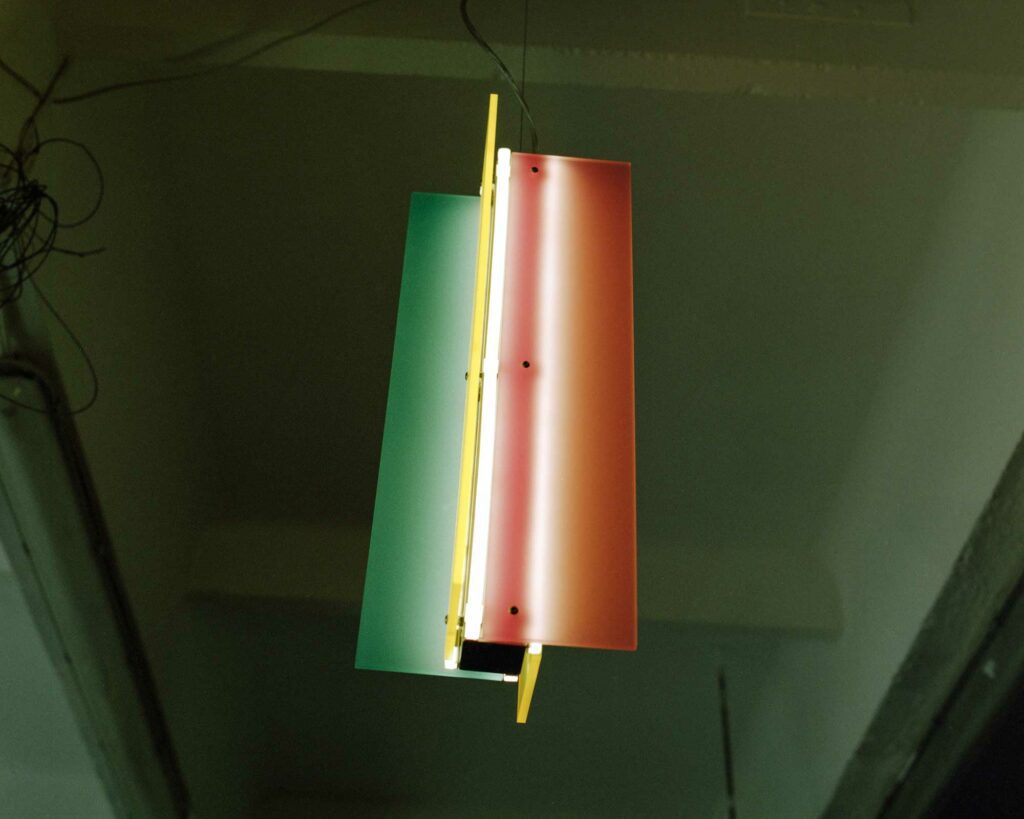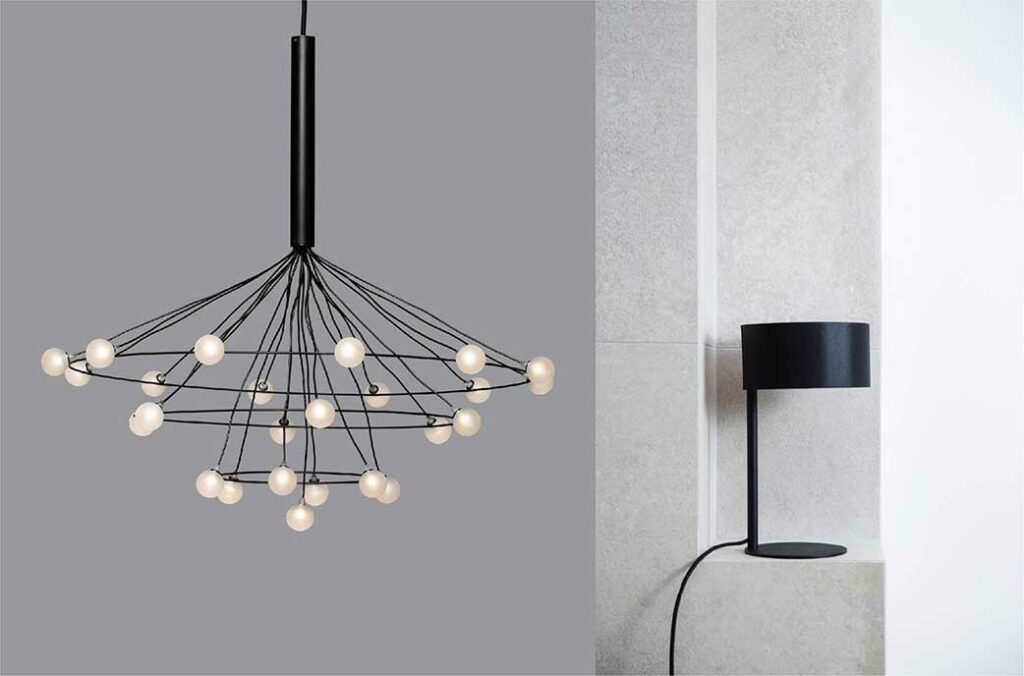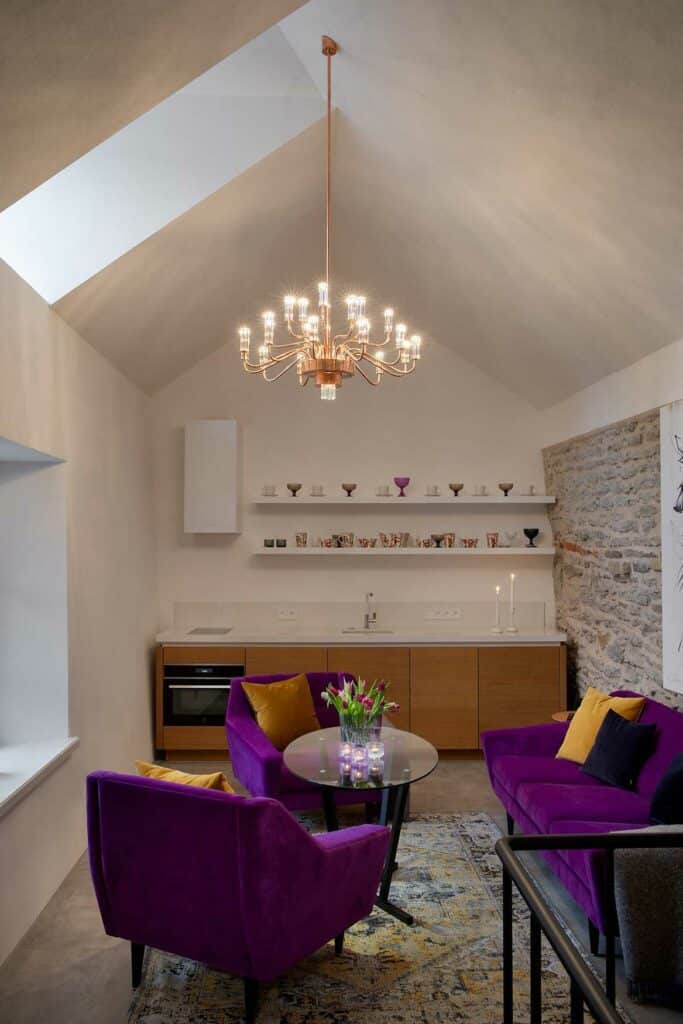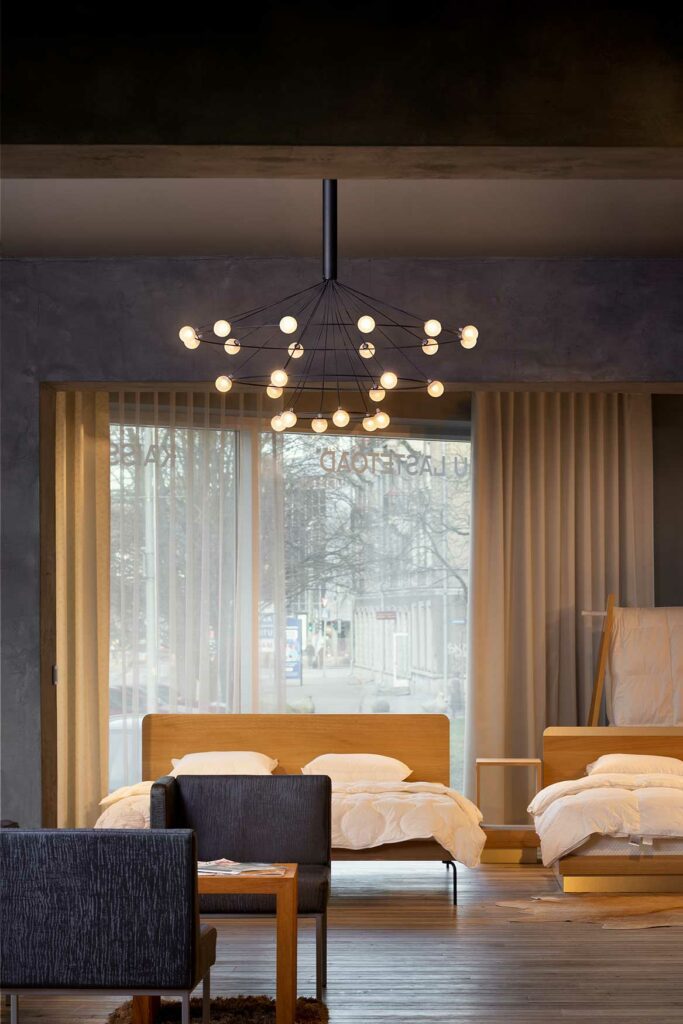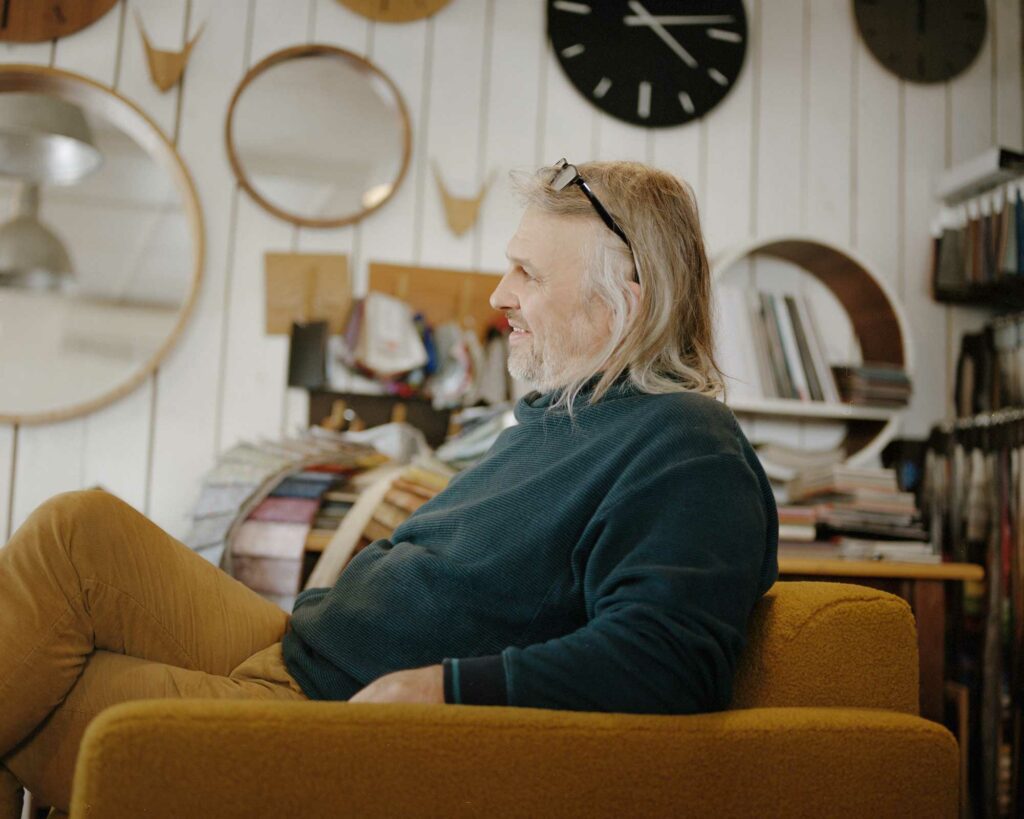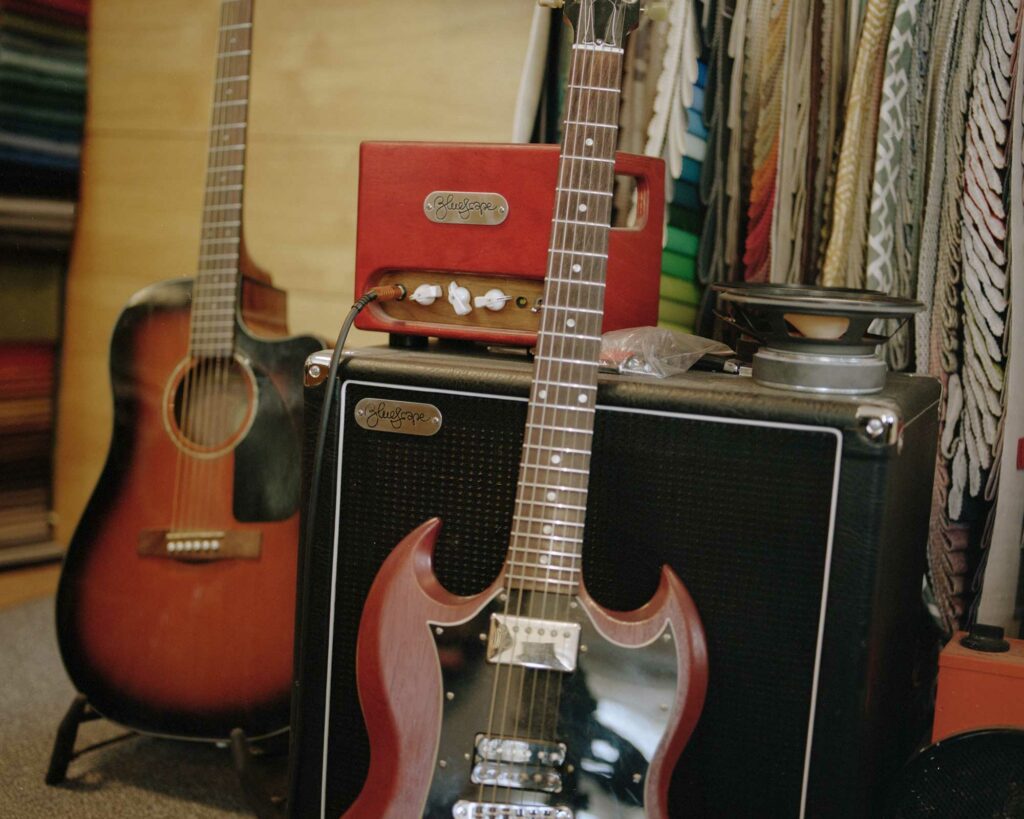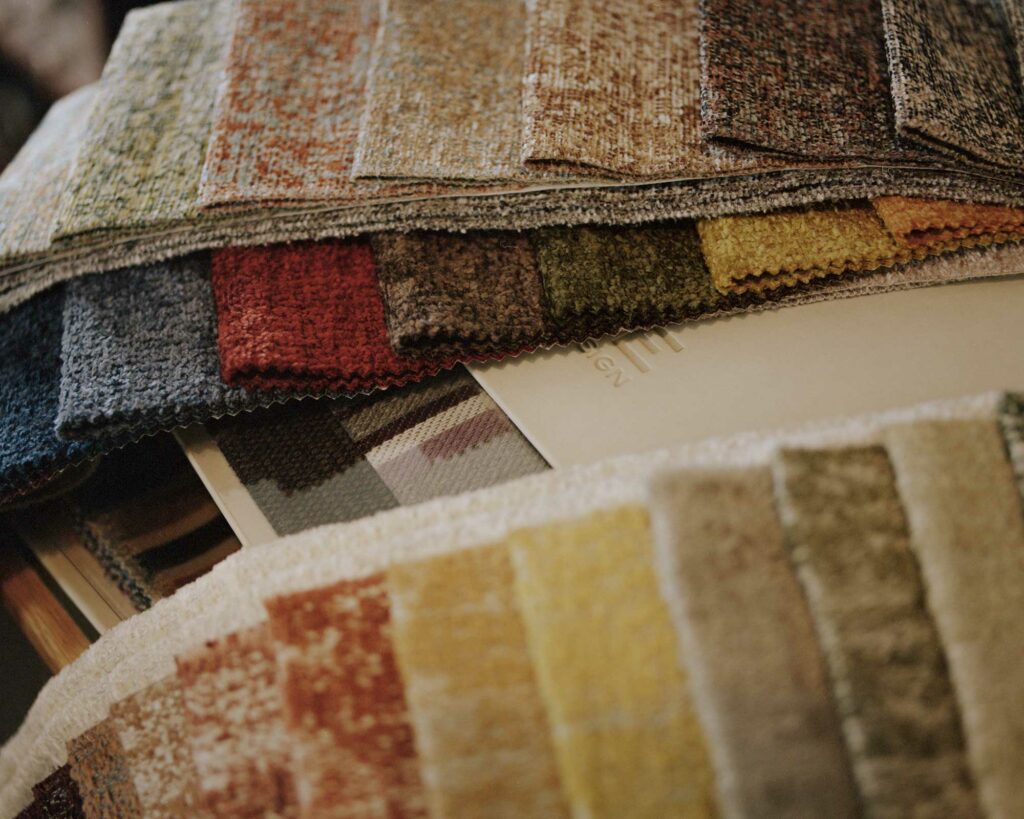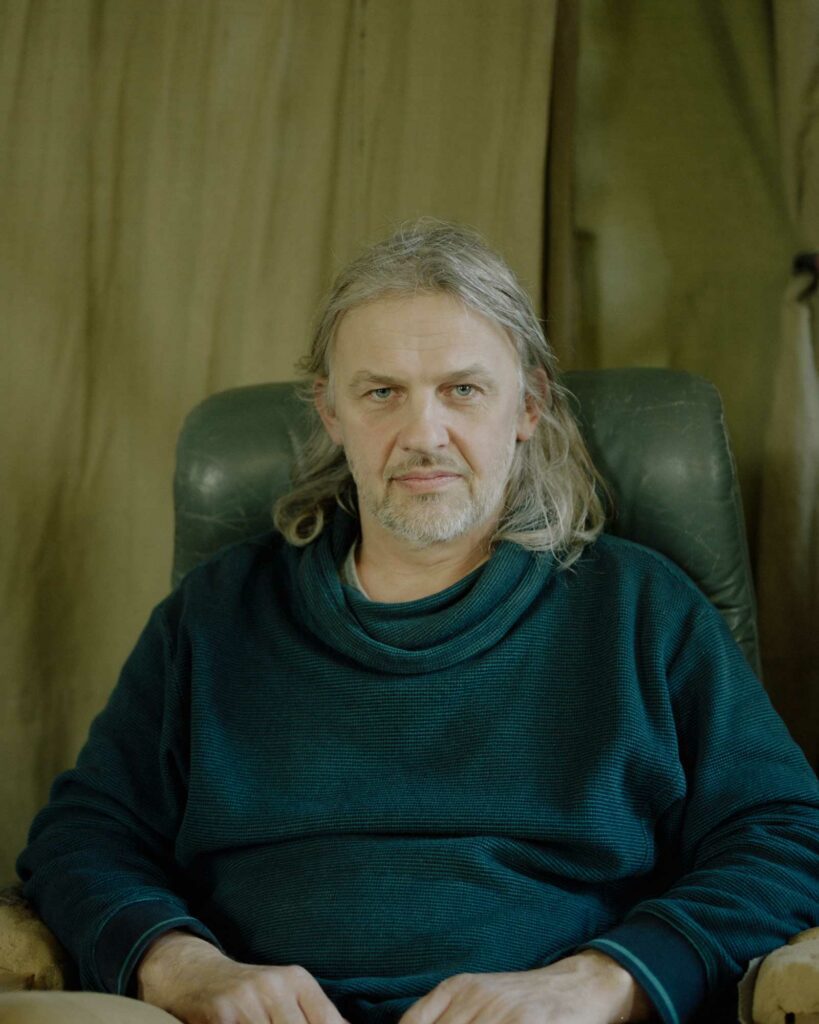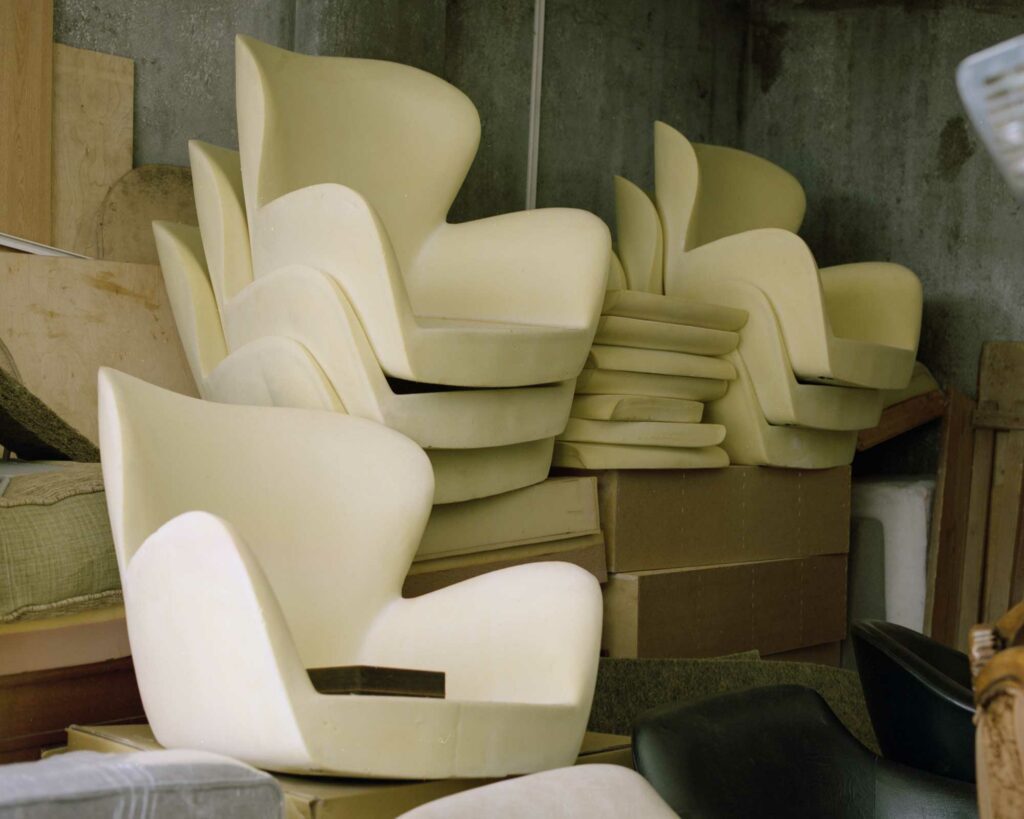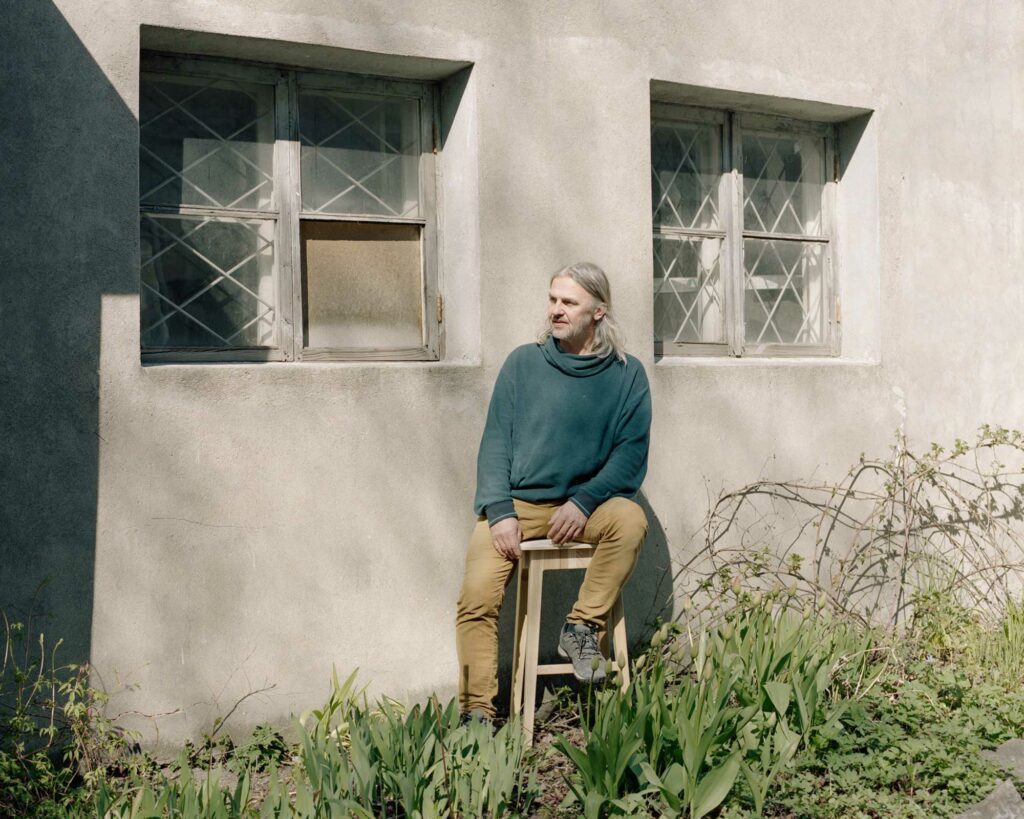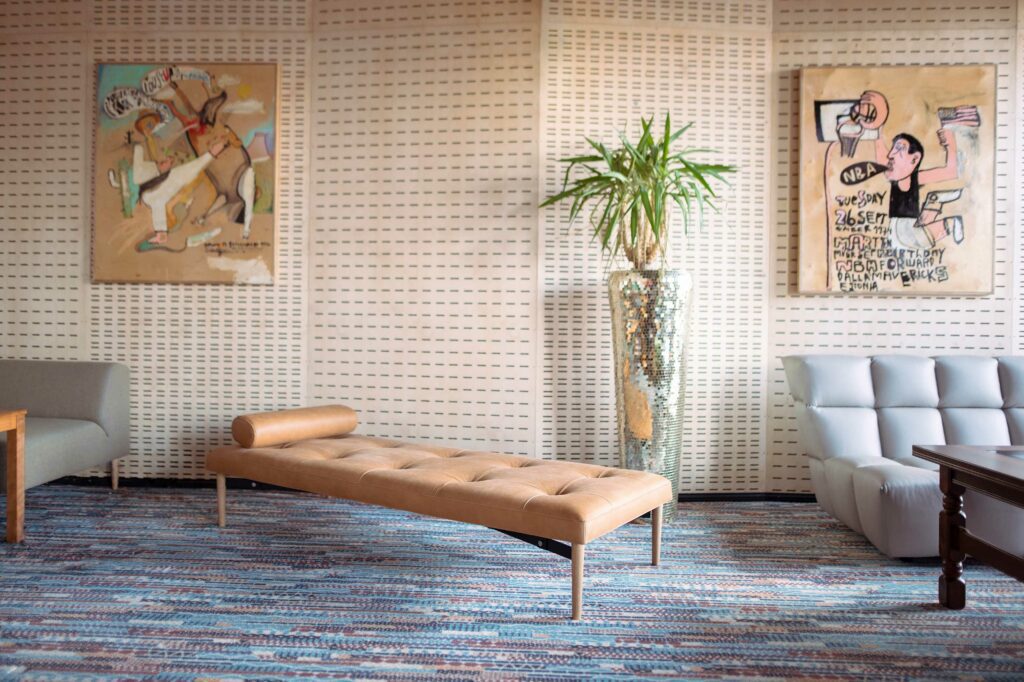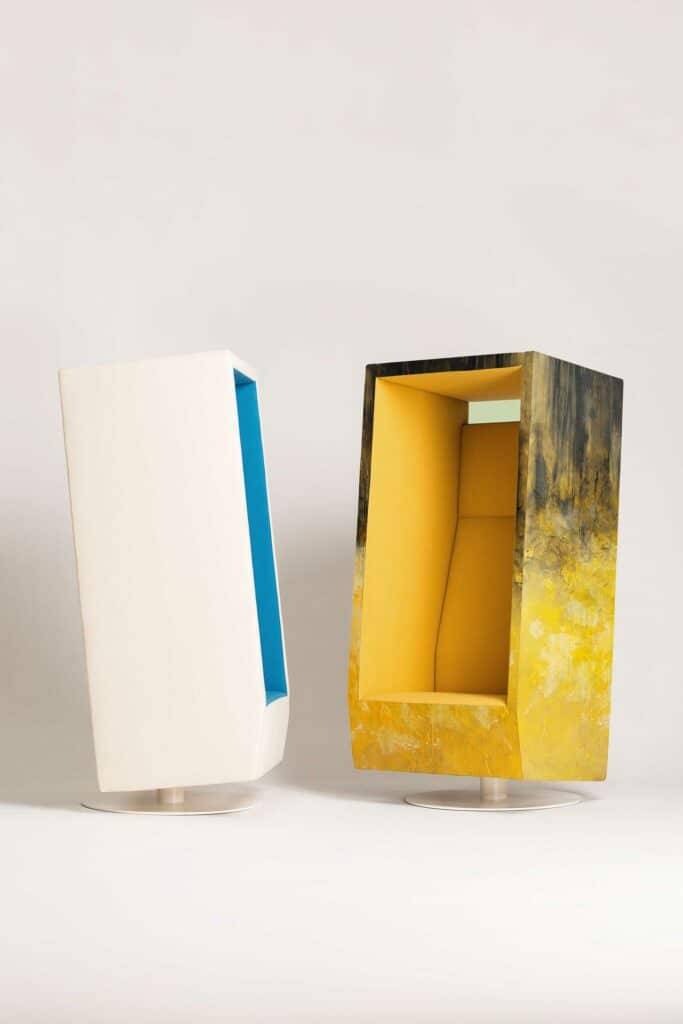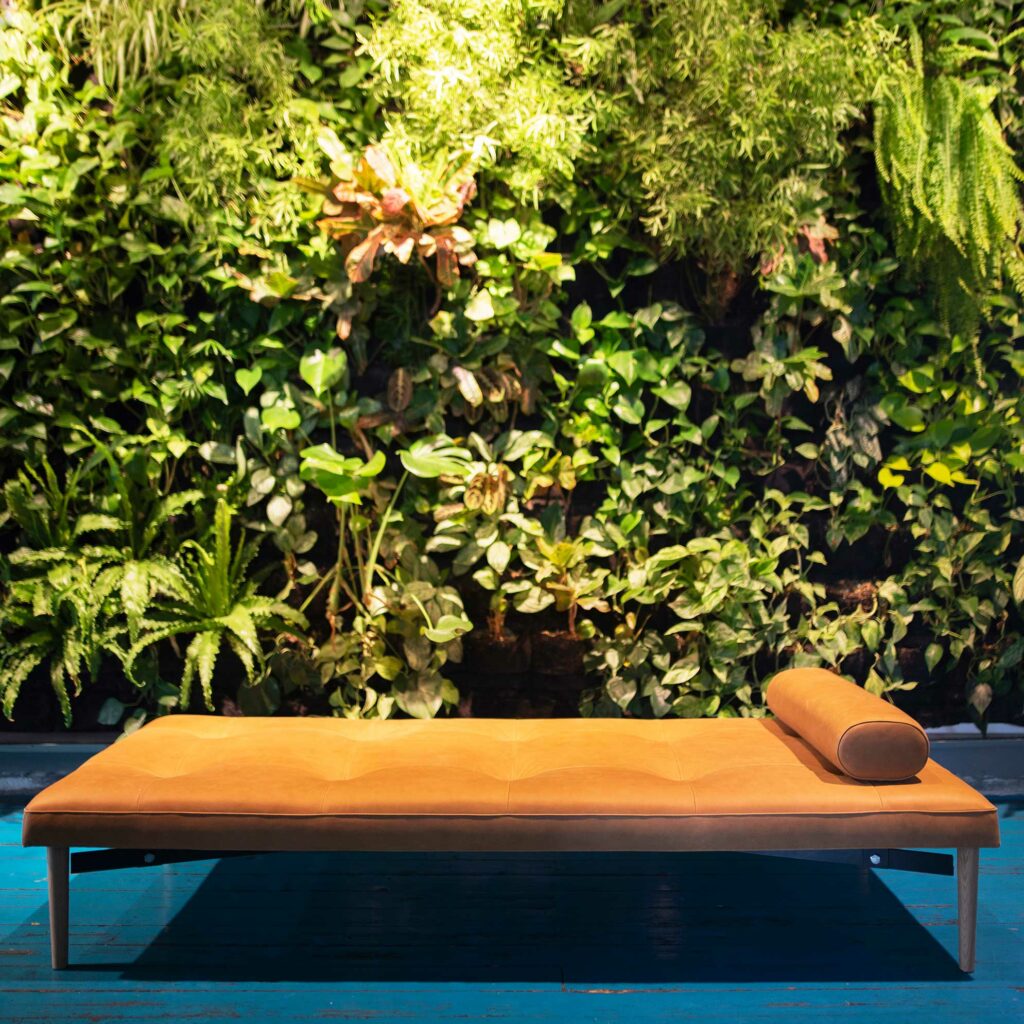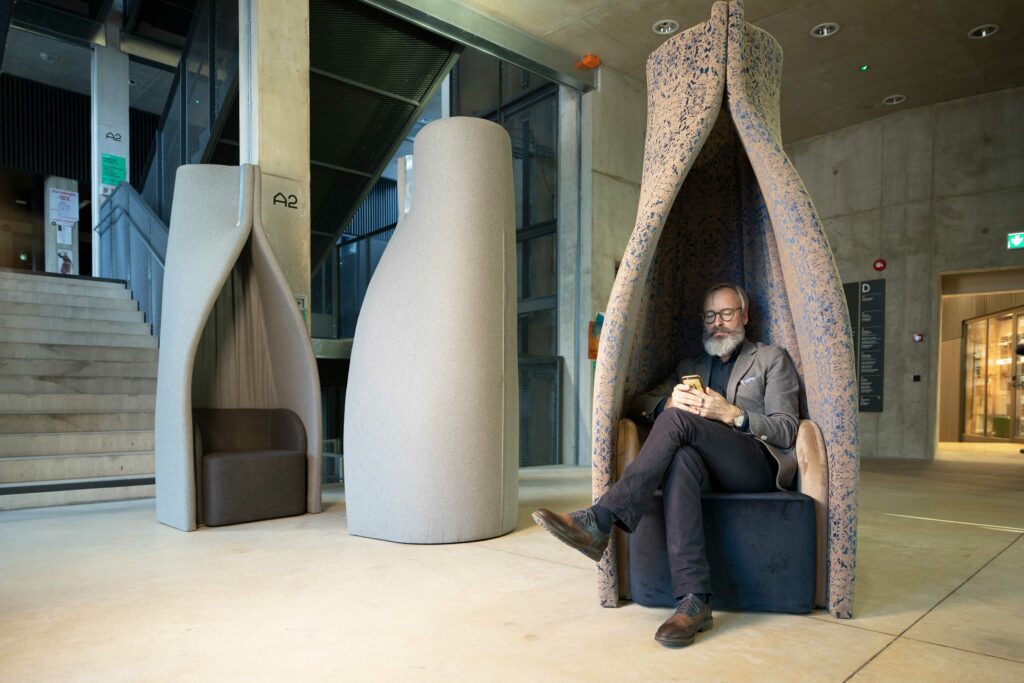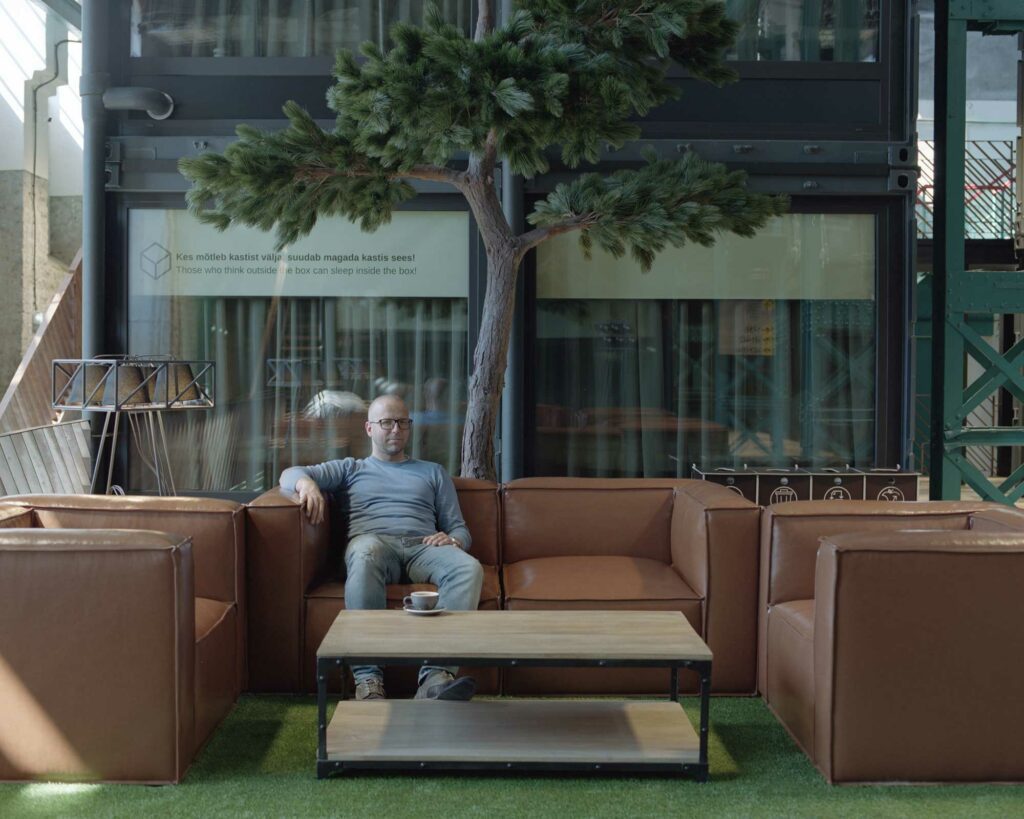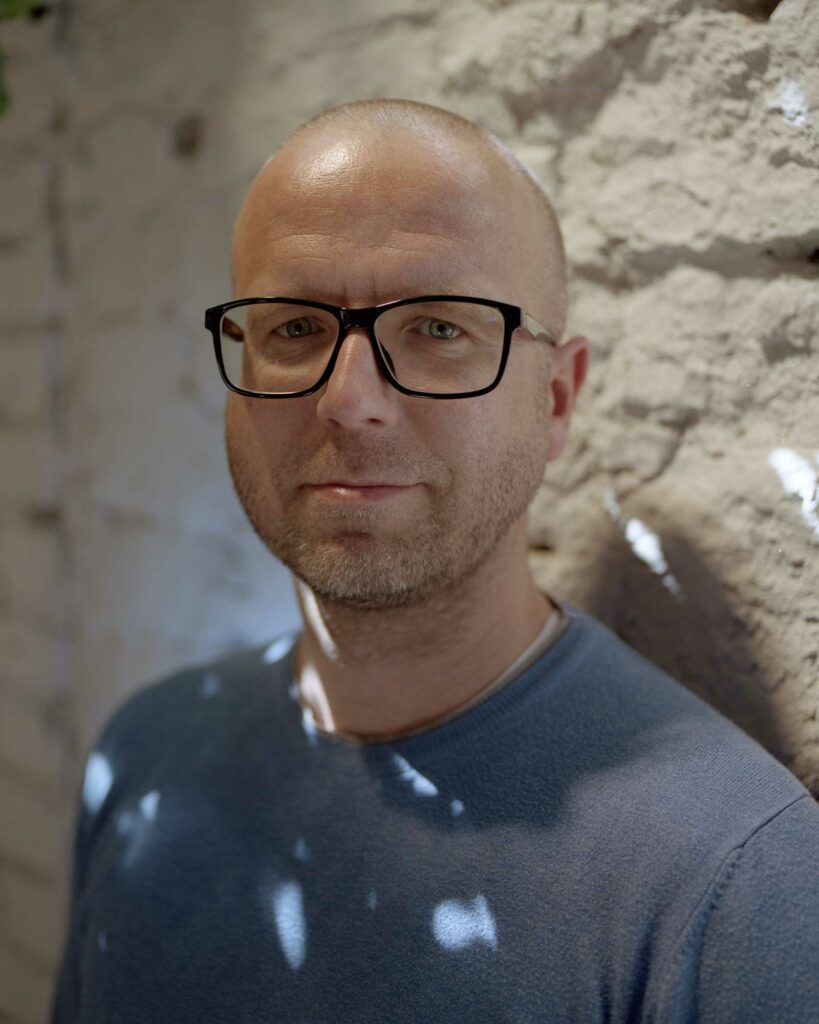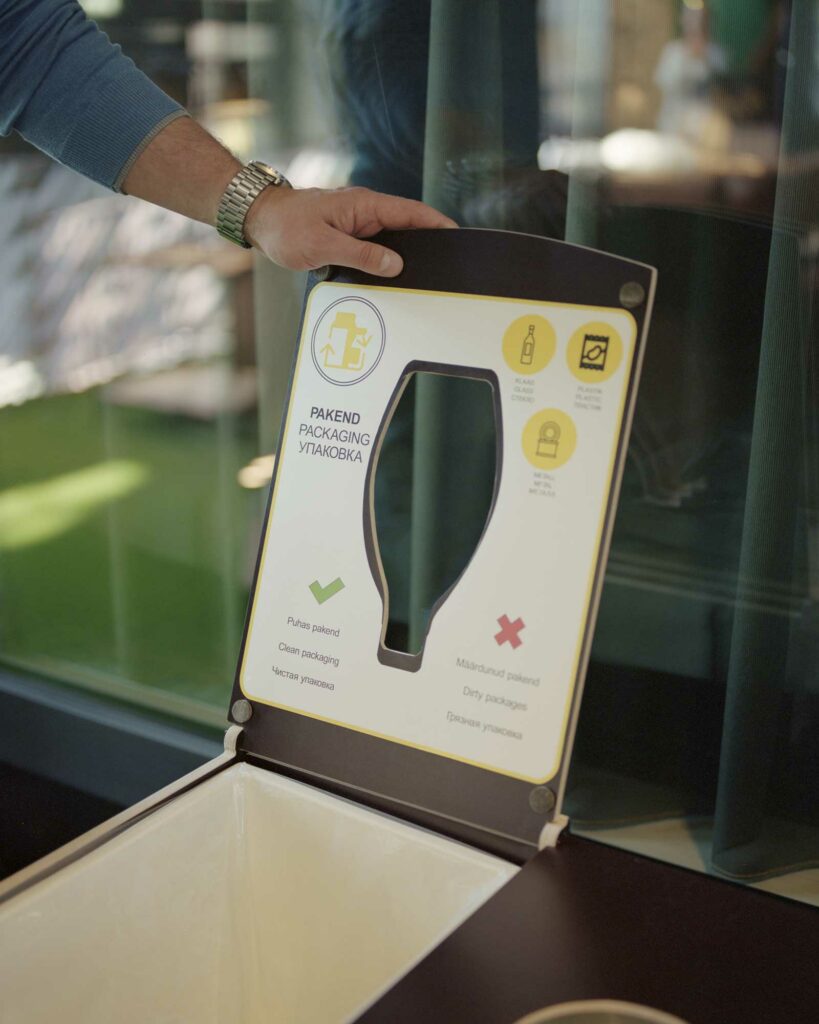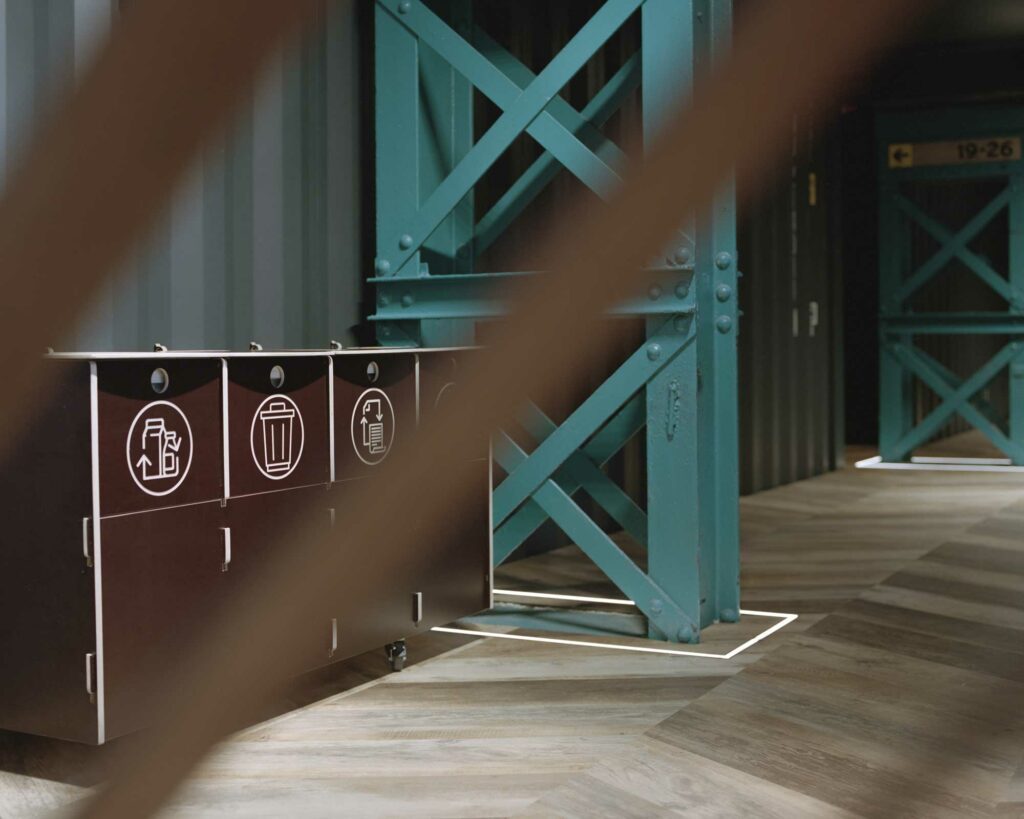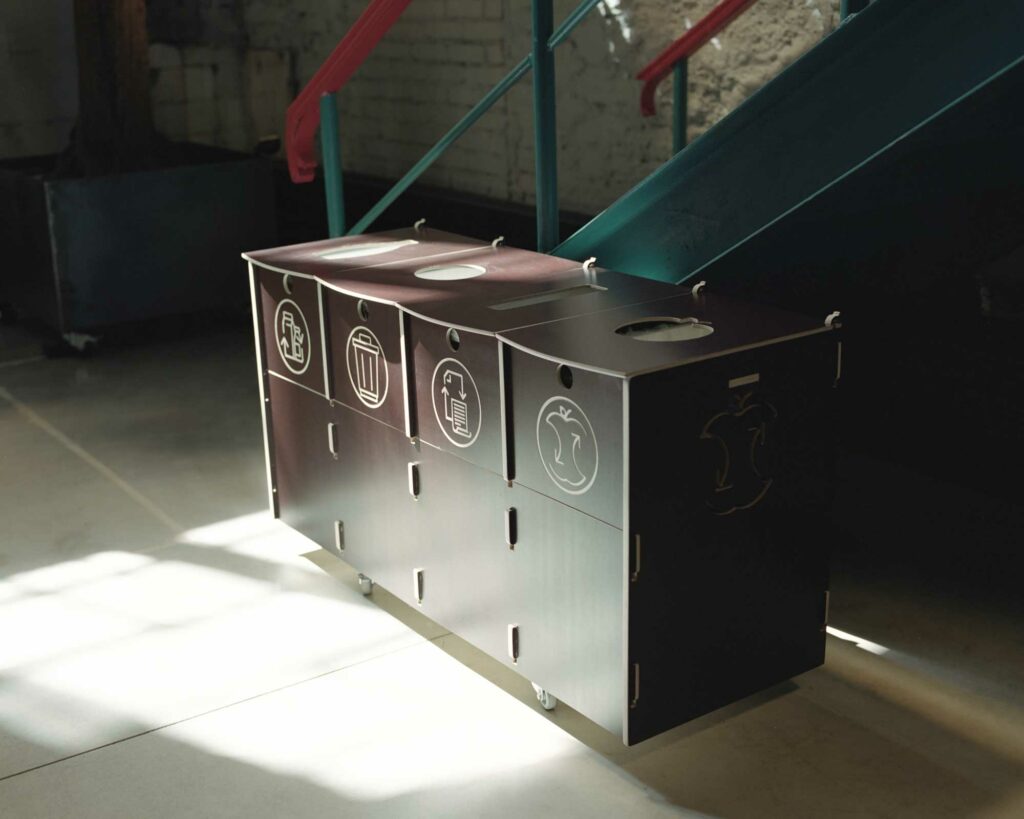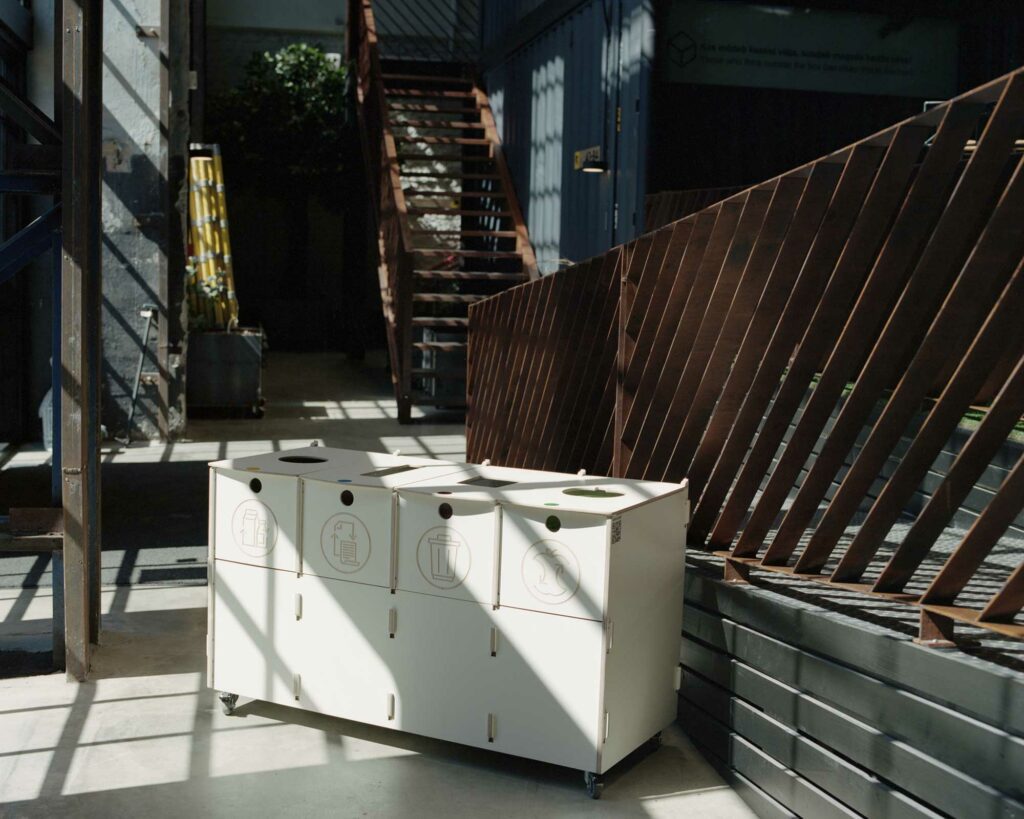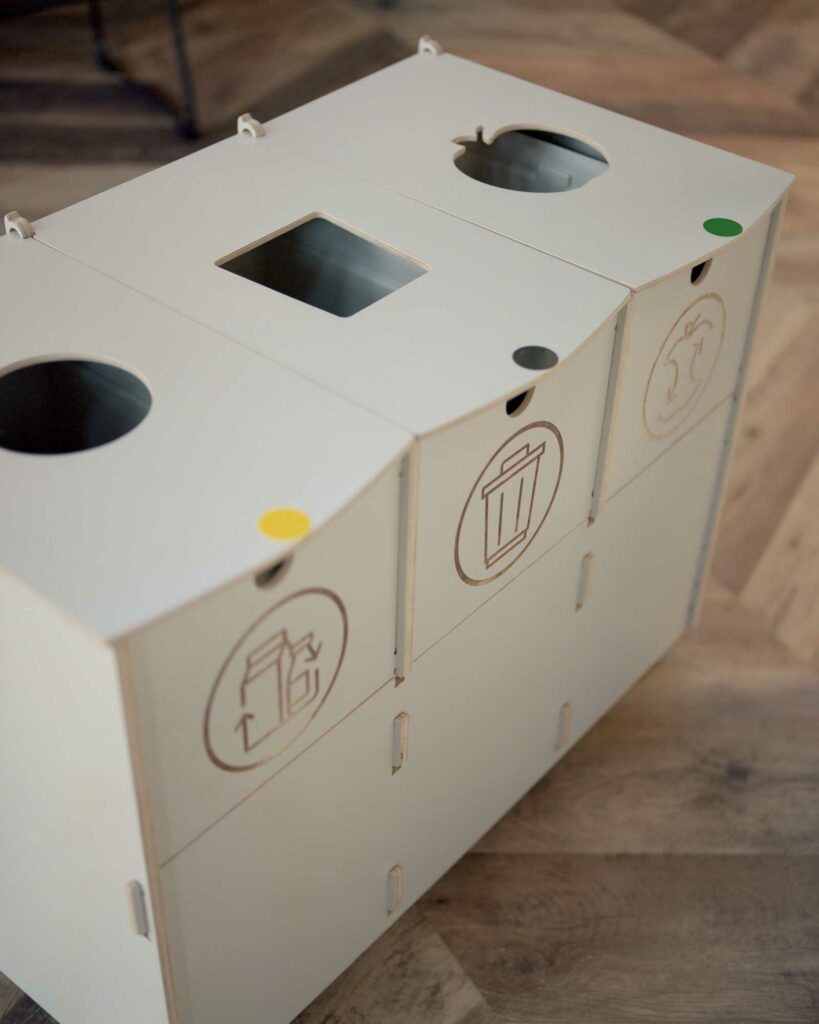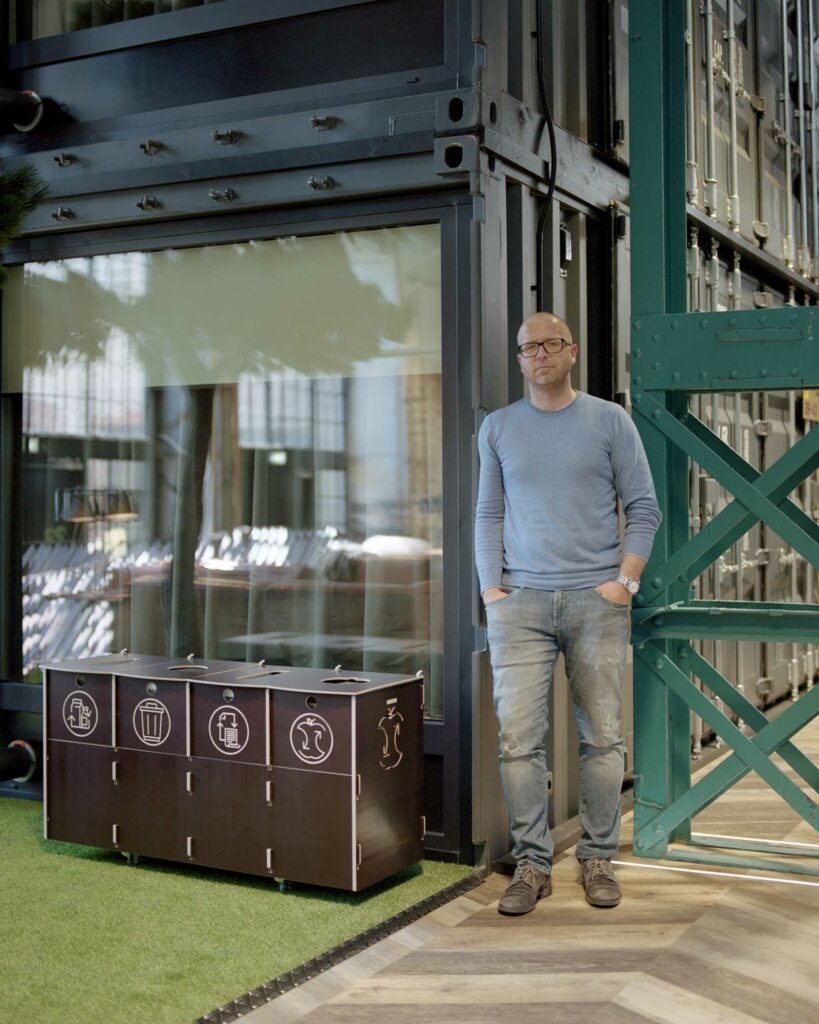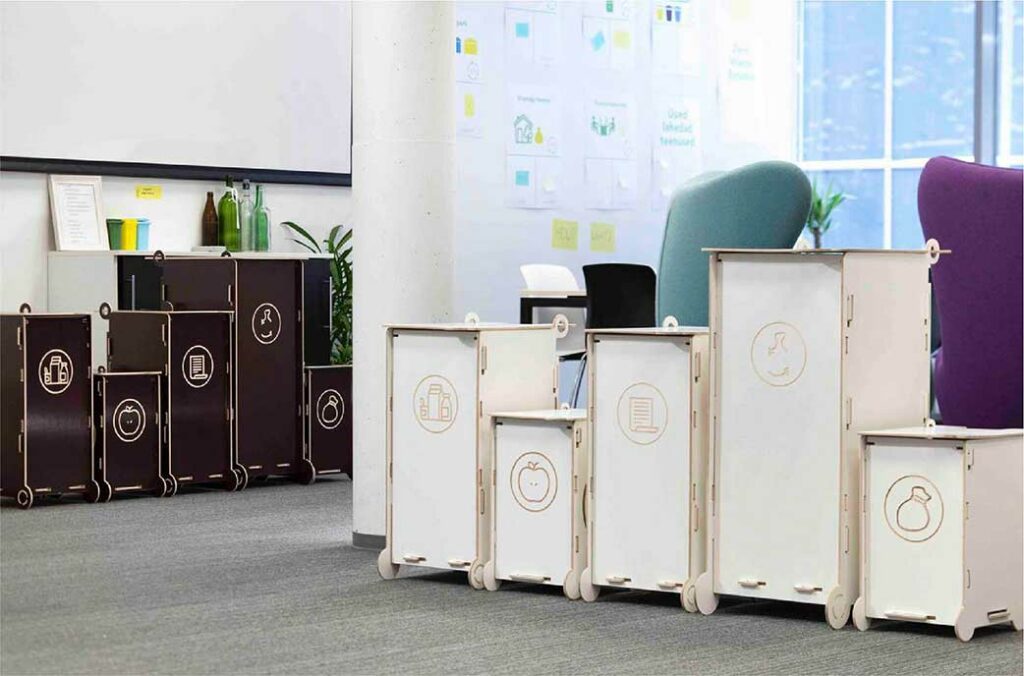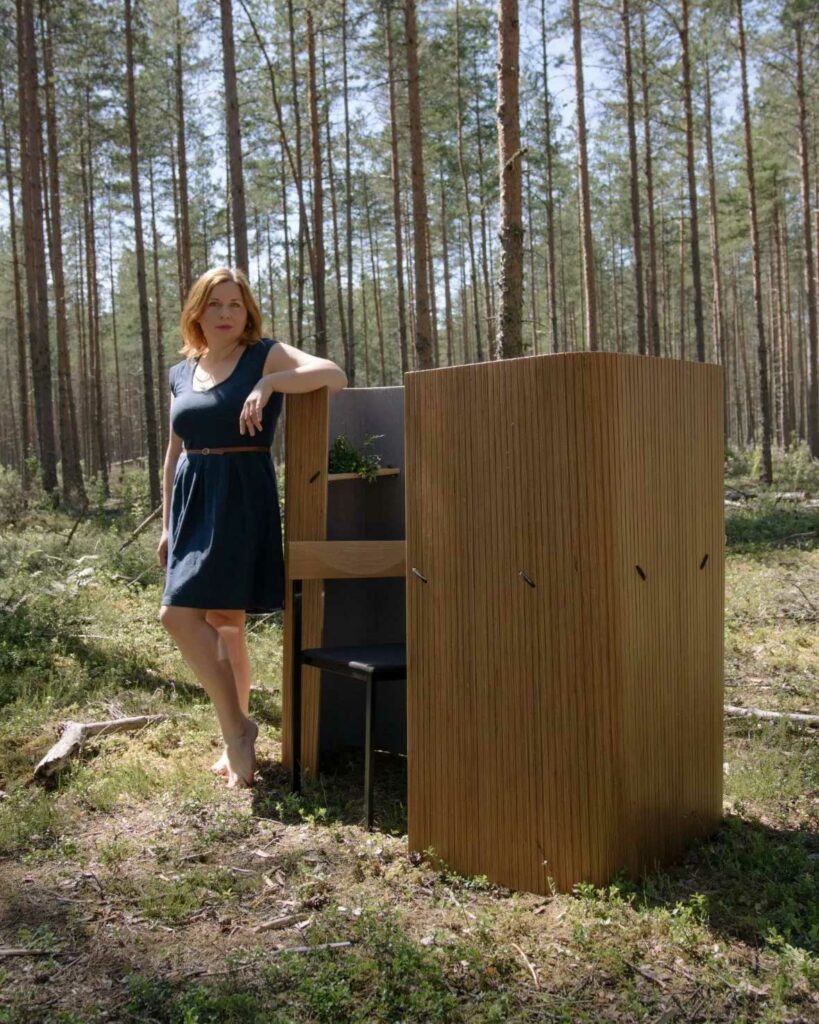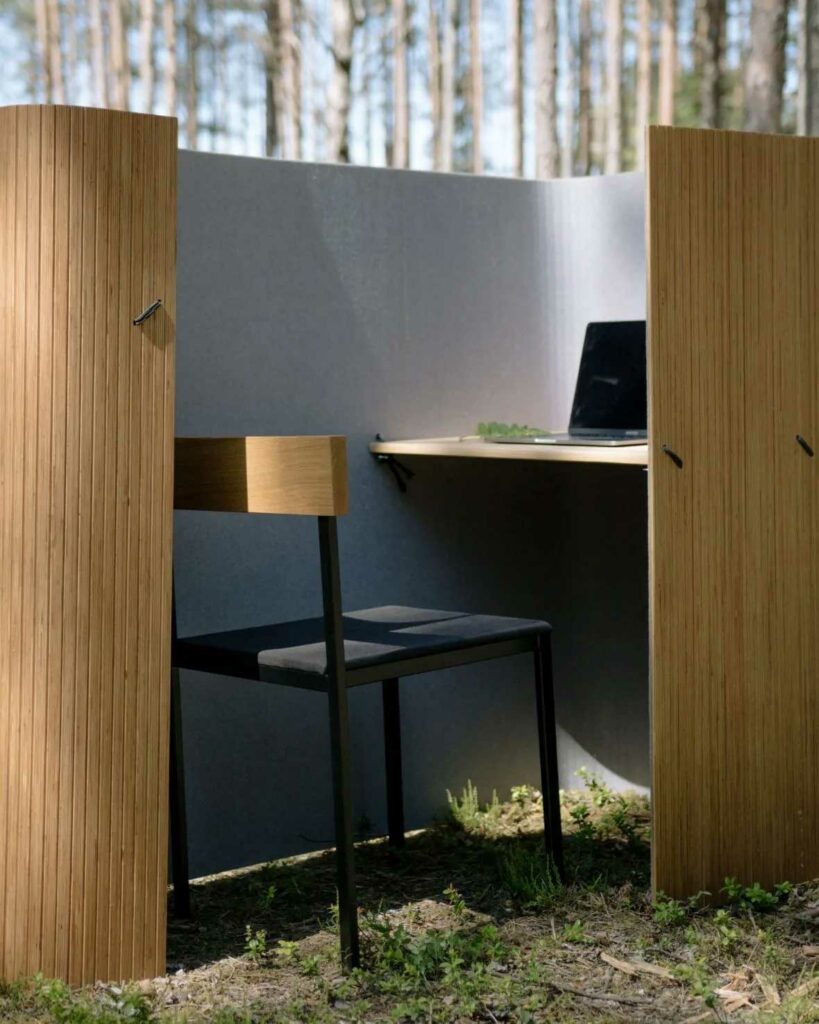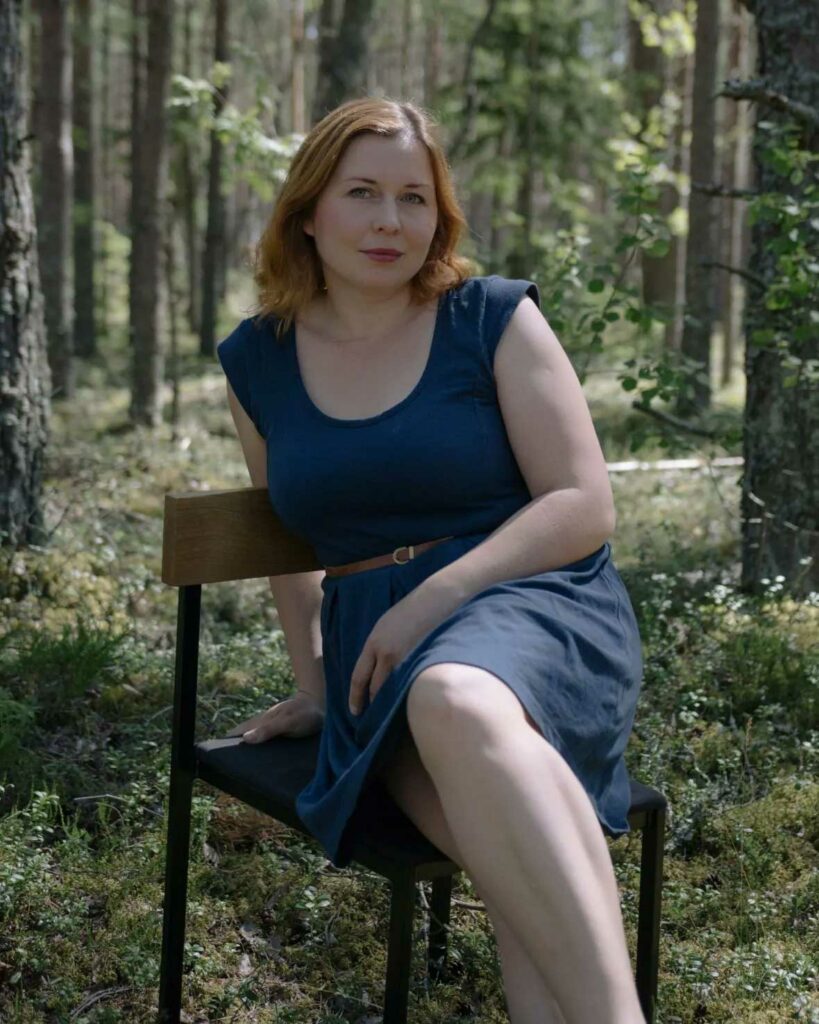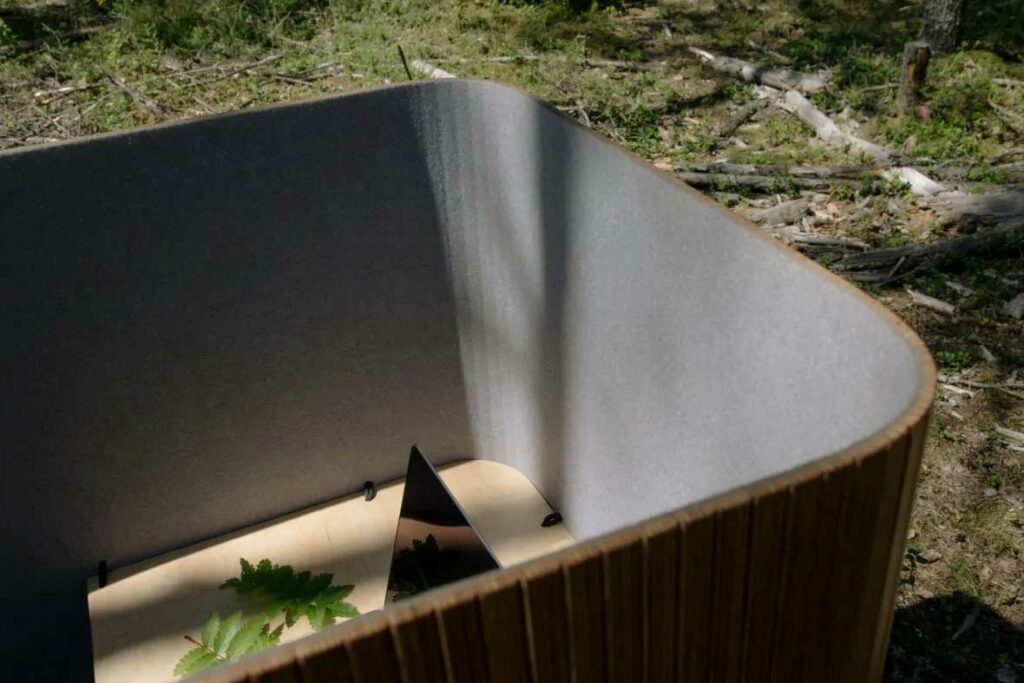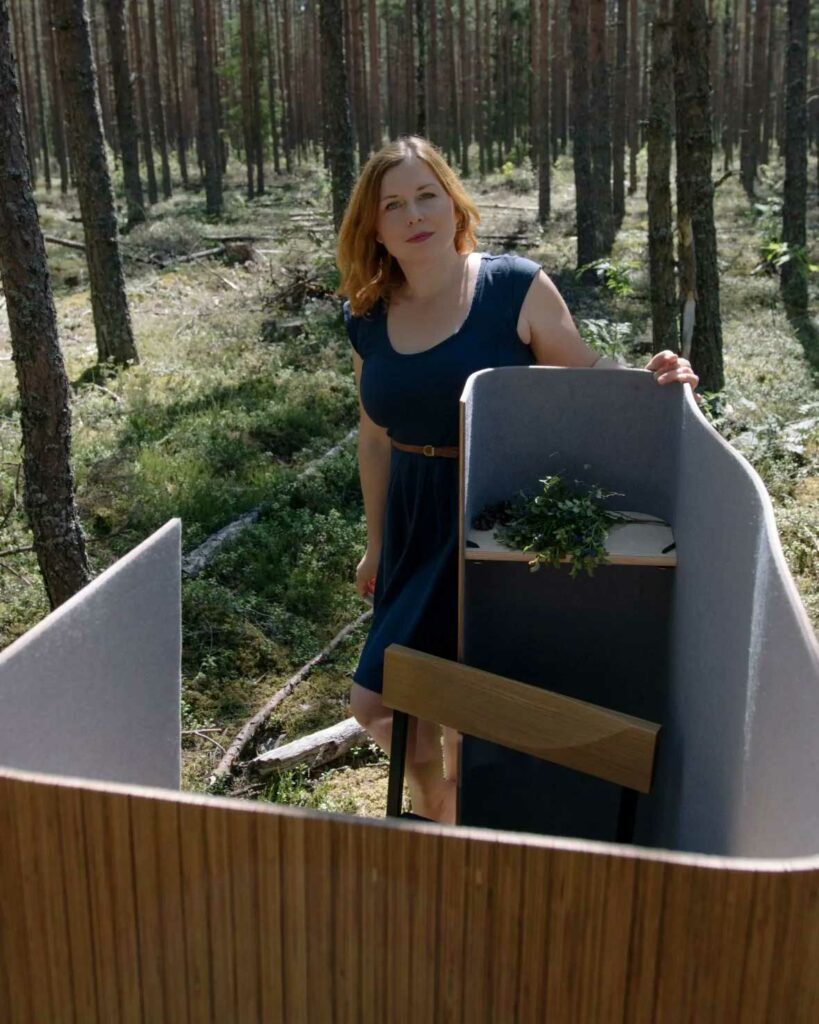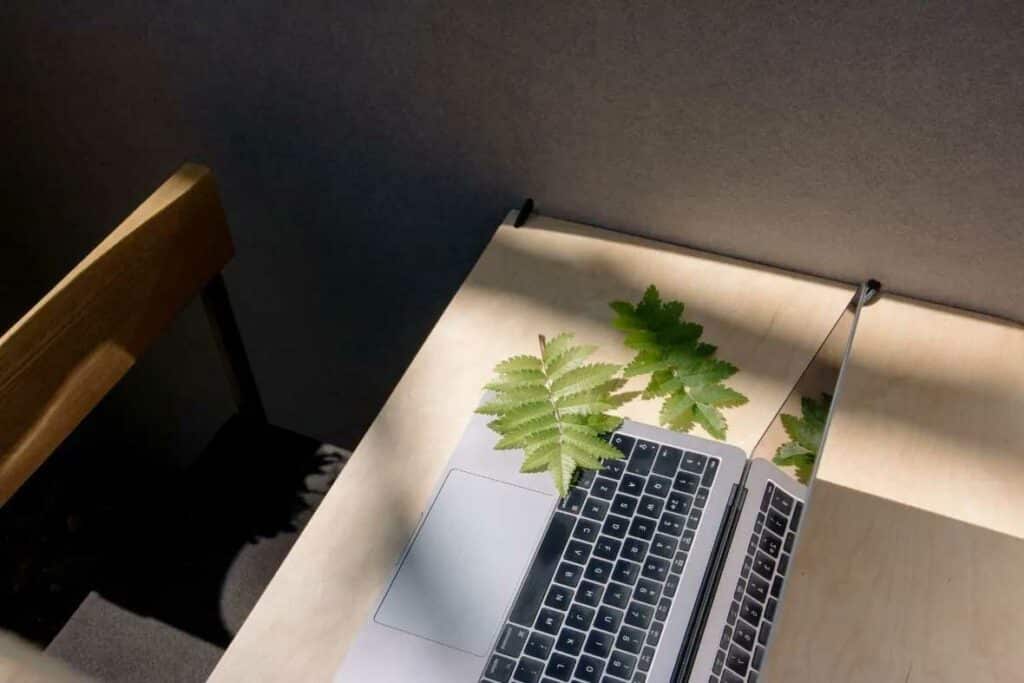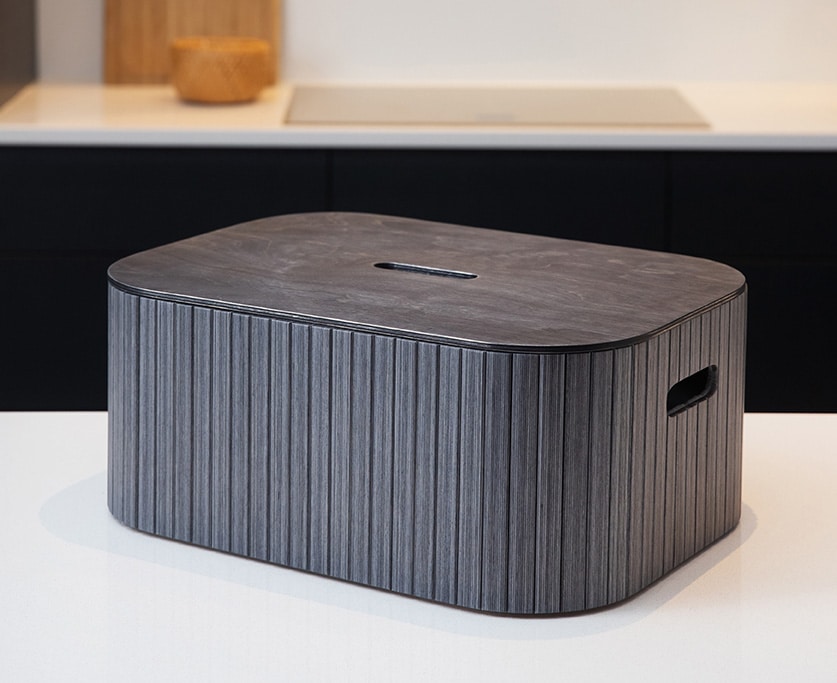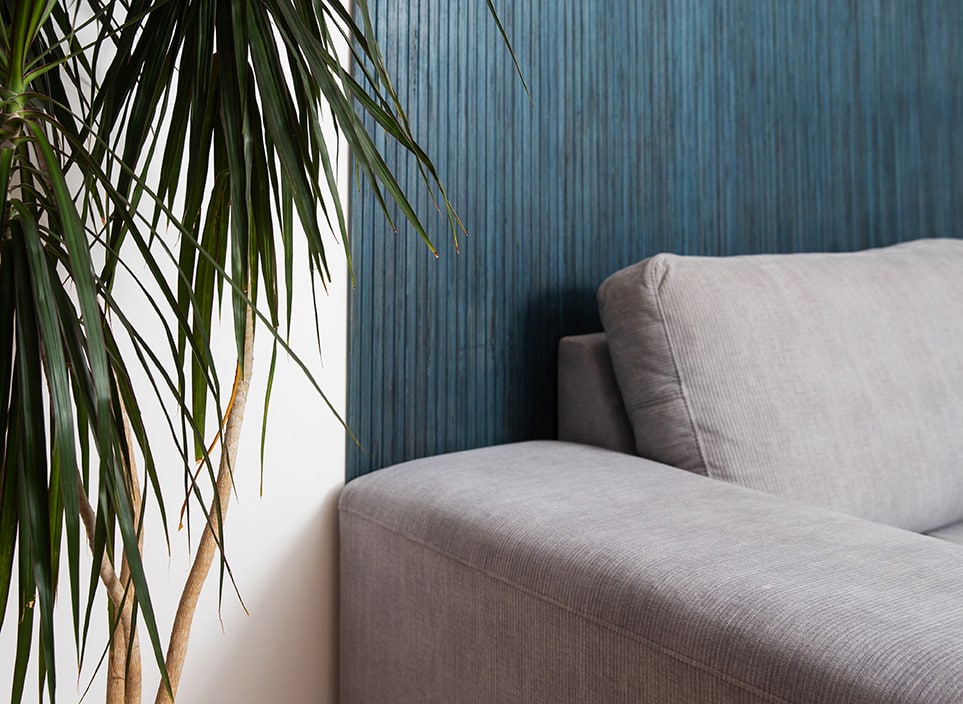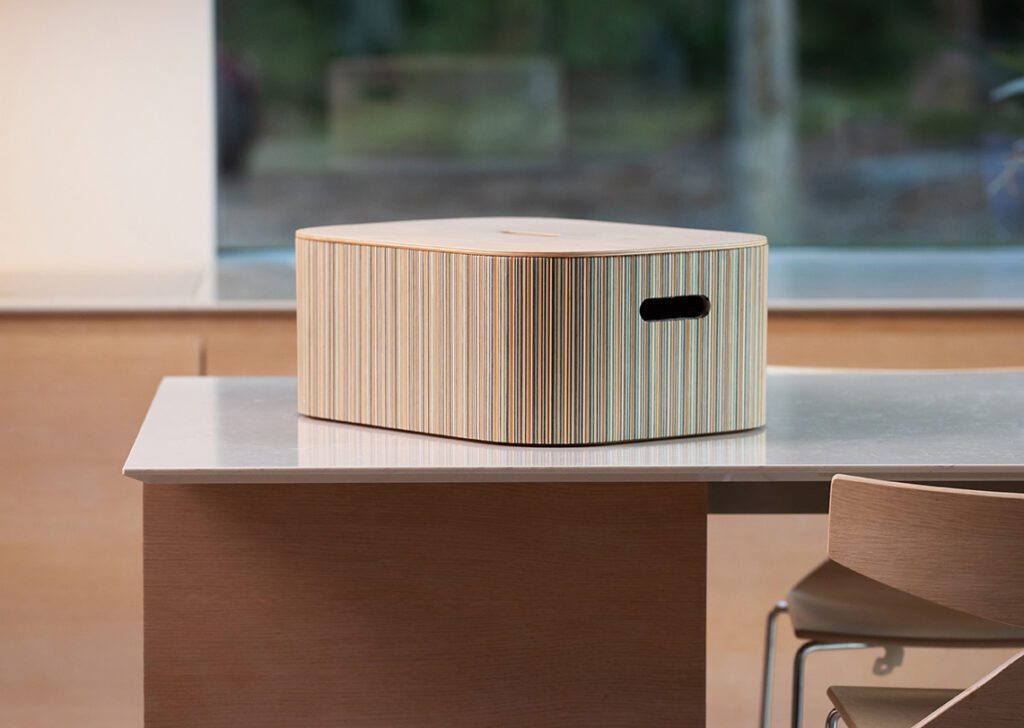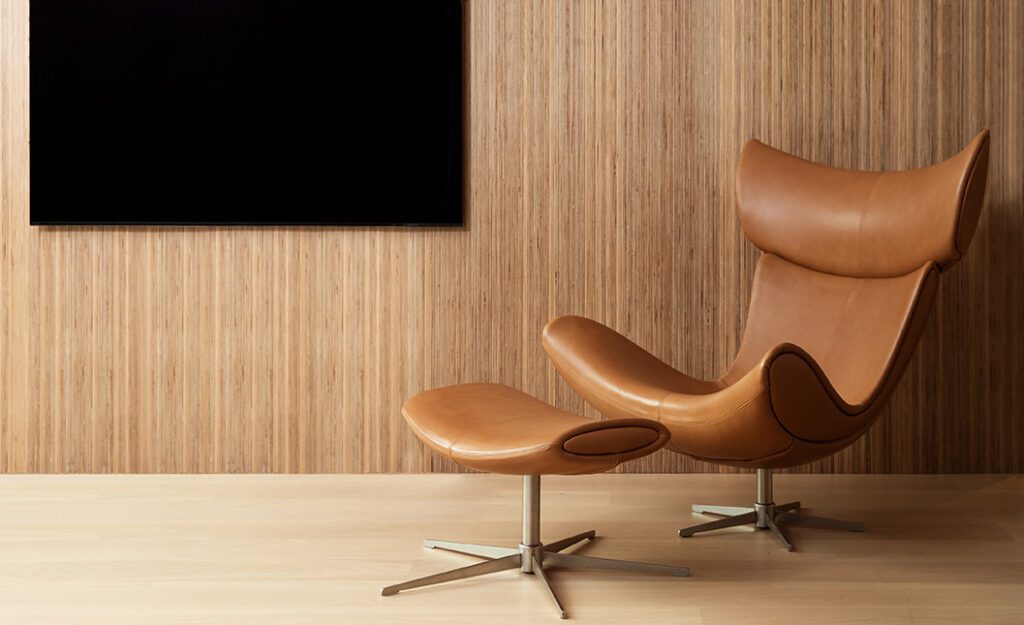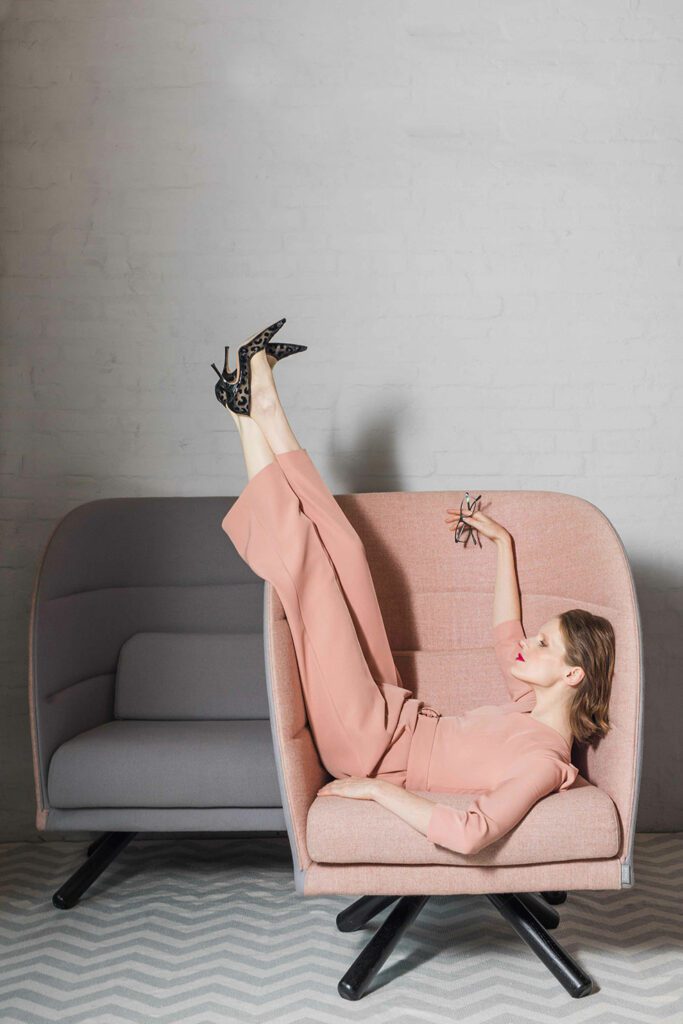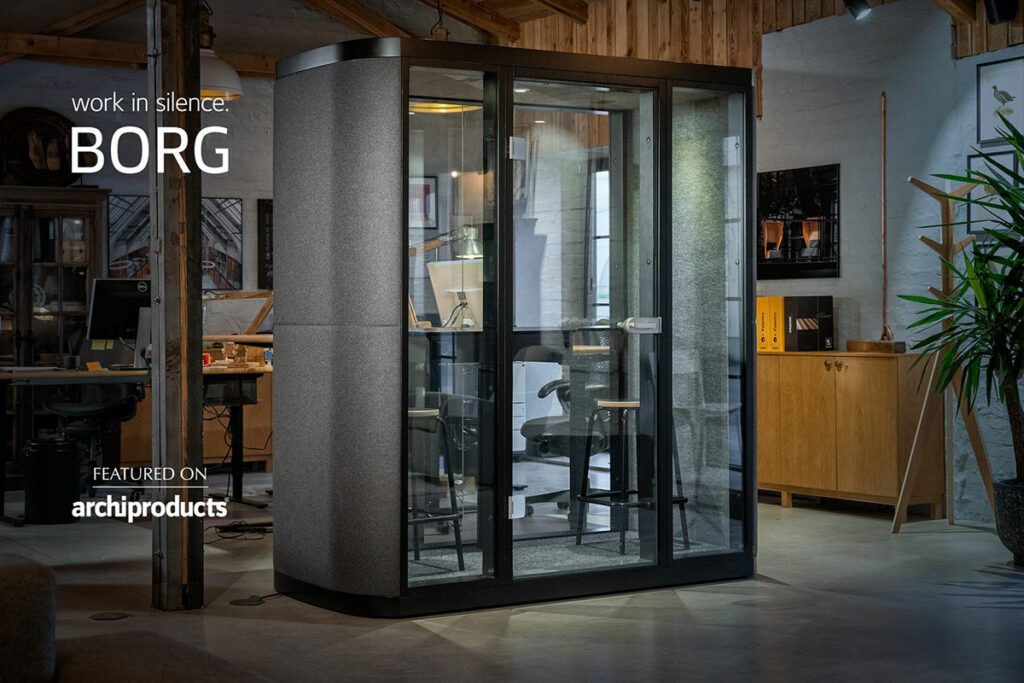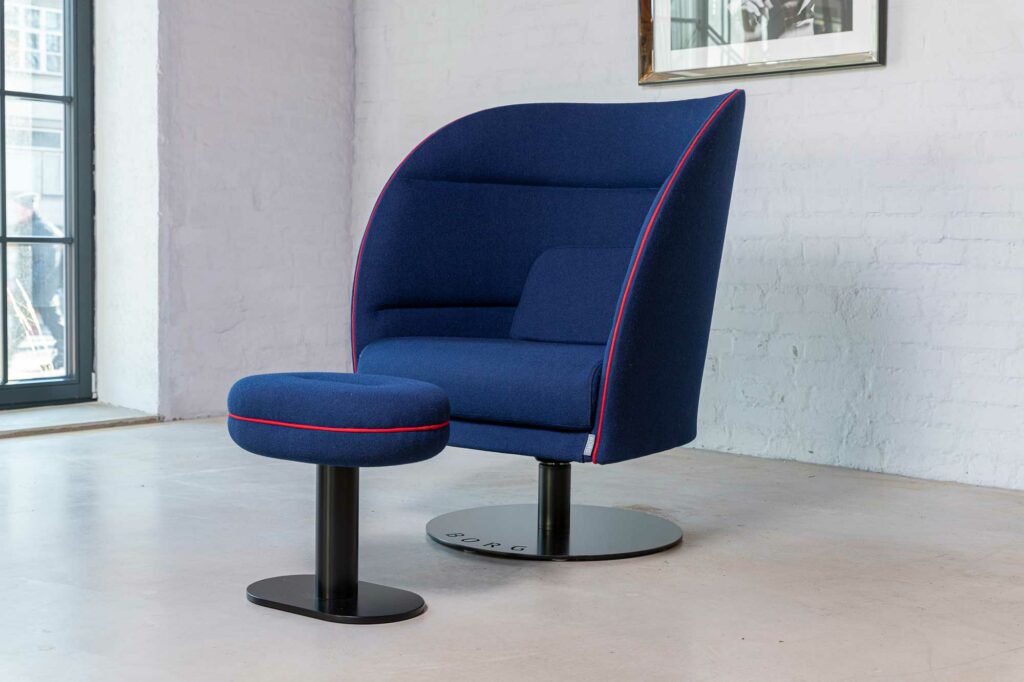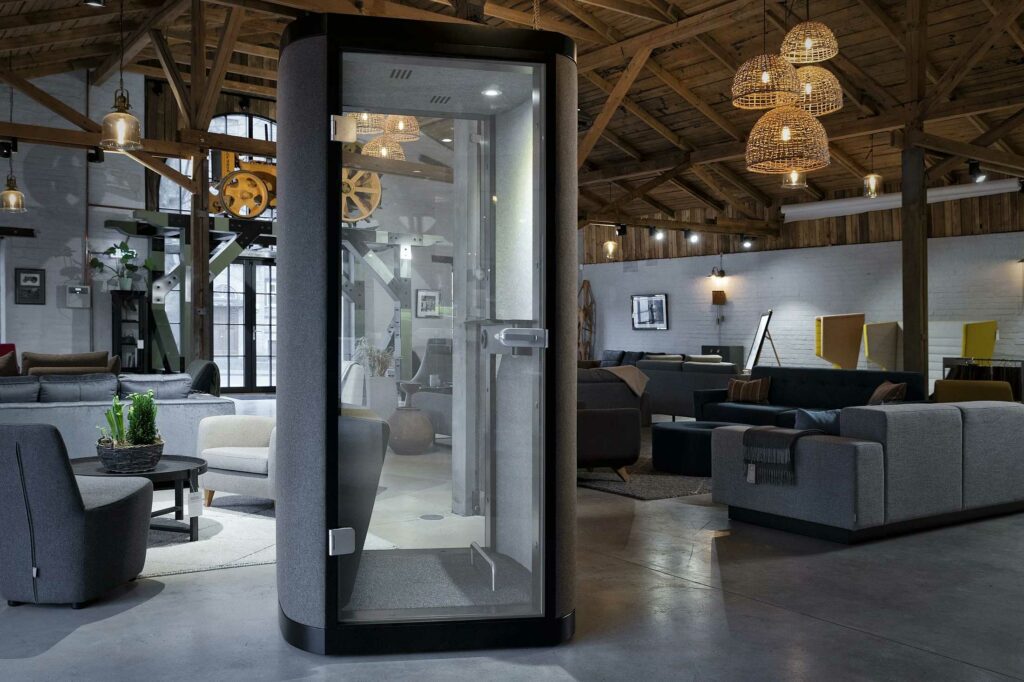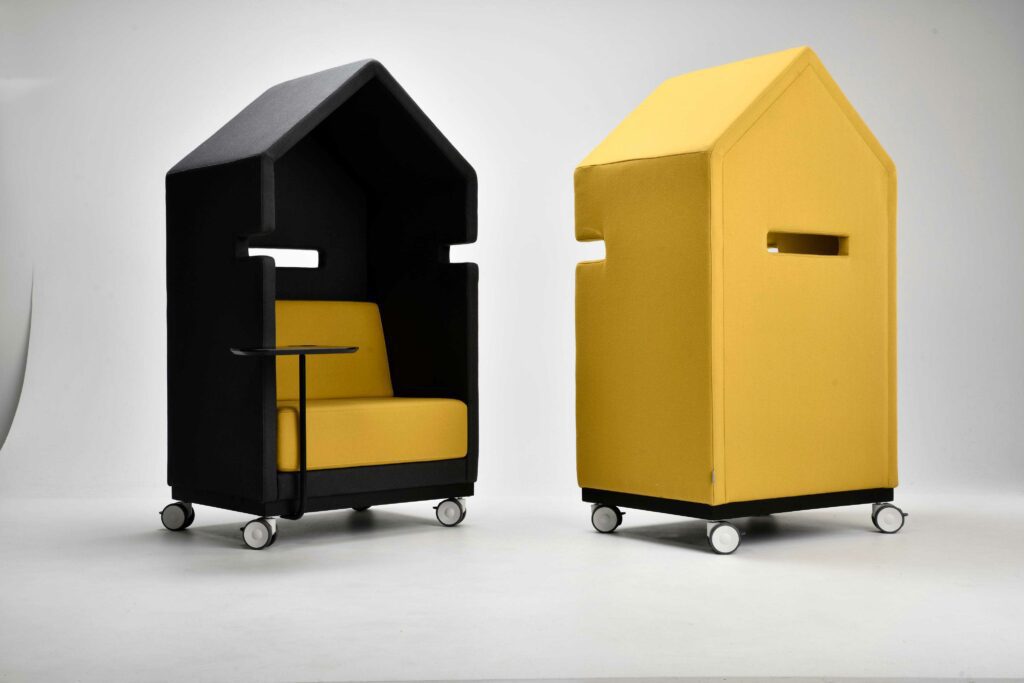SEOS is a designer lighting brand that offers romantically minimalist chandeliers as well as floor and wall lighting. SEOS’ light sources can be found at the Estonian embassies in Berlin and Helsinki, the Albert Hotel in Riga and the Hilton Park Hotel and the Nordic Hotel Forum in Tallinn.
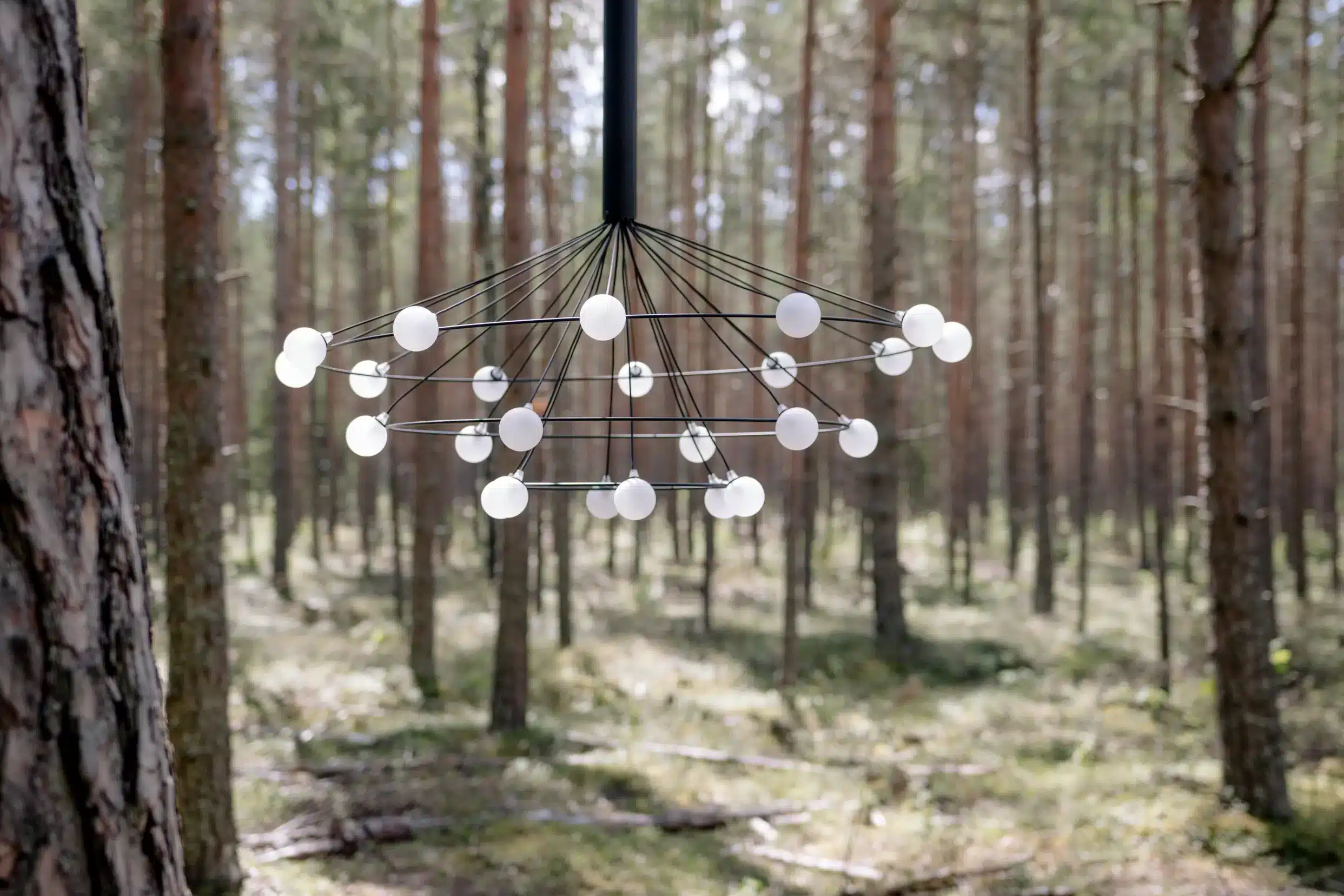
3 Days of Design
Tallinn Design House presented on 3-5. September 2020 exhibition “Reconsider the Love for Nature” at the Estonian Embassy in Copenhagen for the 3 Days of Design design festival. This time the focus of the festival was on sustainability and the circular economy. The exhibition of Estonian designers highlighted the opposing relationship between nature and people, which reminds us that nature does not need people – instead people need nature.
Sustainable design was represented by Estonian brands – RA SUN, PLYLAND (Triibuvineer), SEOS, SORTAIDER and BORG. Their products represent an aesthetically pleasing design born of a symbiosis of the clever use of materials and sustainable thinking. The exhibition introduced Estonian design to local interested parties and companies, and created new contacts and business opportunities in Denmark.
Lights designer Tõnis Vellama comments: “The 3DD festival is undoubtedly a unique format in the world, where Denmark invites designers from other countries to participate in the design festival, turning national representations into design embassies. I have previous design ties with Denmark, here is a very good opportunity to get feedback on my newer creations. ”
SEOS
Tallinn Design House visited the designer lighting brand SEOS and met with the brand’s creator Tõnis Vellama, who introduced his company and shared his thoughts on Estonian design topics.
How did you get to the world of lighting?
After graduating from Tartu Art School, I wanted to go all over the world to gain experiences. One of the important contributions to the café “The Ugly Duckling” founded by young Danes opened the door. From there on contacts were made and it opened an opportunity to access a world-class design agency Jacob Jensen Design. The visit grew into a 5-year collaboration that I consider to be my second higher education. Working in an international team taught a lot about teamwork and the design process as a whole.
I also studied product design at the Estonian Academy of Arts. In the last year, I started preparing my first exhibition of unique products, most of them, oddly enough, were lighting fixtures. I also chose a series of luminaires for my diploma thesis. Part of this work took place in Tallinn, in front of the main entrance of the National Library. Unfortunately, they were destroyed during the April riots – the rebels tore them up and threw them to pieces.
How did SEOS begin?
SEOS started in 1994, when I had decided to return to Estonia. Many opportunities had arisen in the homeland and this motivated me to start my own business with friends. In the meantime, I also tried the life of a wageworker as a designer for the Norwegian lighting manufacturer Glamox.
Today SEOS has been operating for 23 years and during that time we have done many larger and smaller projects in cooperation with architects and clients. Under the SEOS brand, light sources have reached the wide world – they can be found in the Estonian embassies in Berlin and Helsinki, the Albert Hotel in Riga and the Hilton Park Hotel and the Nordic Hotel Forum in Tallinn.
What makes SEOS’ design unique?
I would describe my handwriting as romantic minimalism – a balance of beauty, functionality and technology is important to me. Over time, for some reason, I have worked a lot on chandeliers, which are often central to the room and have to solve the task of general lighting, festive lighting as well as an accent that suits the style.
What makes you “light up”?
The creation of luminaires is exciting, because in addition to design and form, there is another dimension – light and shadow. I have experienced that the path to a solution is sometimes very difficult. Often I have an idea and when I find a new light source, a form is born. If the creative process has been troublesome, it should not be expressed in the design – otherwise it will be perceived by the viewer and it will overshadow the beauty of creation. Creation should come easily and offer this beauty to others in its ease.
How do you follow a sustainable line in your company and what is the biggest challenge?
I try to use the details repeatedly – it may even be too much of a need at times in my case. I love timeless design and can’t let it go to waste. For example, I bought old Estonian Theater lights – a number of lamps with a very beautiful design. I like reusing and the idea that old things find a new home in a dignified environment. You don’t always have to create new things, you can use an old thing very successfully if you change it a little. I have also organized a design auction, the aim of which is to find unique lighting fixtures and offer them to others.
In my opinion, the designer has a responsibility for his creation and it does not end with the sale of the product. Throughout the design process, one should think about what will become of the product after use – whether it will move to the aftermarket or can be upgraded and improved. There are many possibilities, but we should pay even more attention to that. The consumer mentality has conquered the world in recent decades, but fortunately this way of thinking has already changed direction a bit and will certainly change even more – towards more environmentally friendly and thought-out consumption.
How do you choose the materials for your products?
In the case of custom work, it starts primarily with the initial task – what are the customer’s needs and expectations and what is the environment in which the solution is created. Material is rarely the first aspect in this case.
In my own creations I try to find new solutions by experimenting. Lately, I’ve been trying to match plywood and wood, but it seems to me that it doesn’t work because the properties of these materials conflict with the properties of light. In the end, it all depends on the balance between the materials used.
How has the vision and creation of SEOS changed during the 20 years of operation?
The biggest challenge in recent years has been to find a balance between creating and entrepreneurship. The ambition is to grow into a profitable design company with a complete package of services. For this, we are creating a longer-term strategy, which we will implement step by step.
How do you see the future of lighting design/the world of design? What is this world moving towards to?
The field of lighting has become electronics-based and this has happened due to the advent of LED lighting. LED is very flexible and can be used to create different solutions, which in turn encourages experimentation. Although an interesting paradox has emerged – these are, so to speak, Edison-type luminaires, which are like a step back in time – perhaps it is a deliberate nostalgia, but in the design world it still happens from time to time. As the saying goes – the new is the forgotten old.
What has been the most memorable project for SEOS?
One of my favorite projects has been the design of a lighting installation for the Skype Tallinn office. The client gave me free hands in the initial task and it was an inspiring opportunity for me as a designer. The environment made it possible to create a three-story installation. Before making a real-size solution, I made a model and made sure that the luminaire would look and work as I had imagined. Today, 7 years later, I am still proud of the result. It is a great victory for a designer when creation becomes a timeless part of the environment.
Given the current situation, what is the biggest challenge for the company?
The crisis caused by the virus has shown that an online store is very necessary, because there the customer can get acquainted with the products more easily. Of course, a physical salon is also necessary, because a person really wants to see and touch things. In the case of luminaires, the third dimension is also important – the light itself, which is difficult to perceive through a photo. We are currently working on creating a new salon and we hope to share the good news with everyone already in autumn.
RA SUN
RA SUN offers durable handmade upholstered furniture, which is a combination of functionality and unique design and is made of the best available materials.
Tallinn Design House visited the design furniture brand Ra Sun and met with the brand’s creator Allan Proos, who introduced his company and shared his thoughts on Estonian design topics.
How was Ra Sun born? How did the brand get that name?
The reason for setting up the company was the economic crisis of 2009 and the accompanying status of the unemployed. Starting your own business was a dream long before that, but at that moment I suddenly got the feeling that “if not now then when!”.
The brand name came from the initials of my and my brother’s name, Allan and Raivo – Ra. In fact, one of the creators of American jazz, Sun Ra (Le Sony’r Ra), who created psychedelic music, is associated with the name. Sun Ra’s band consisted of colorful characters in carnival costumes who did their thing from the heart. We liked their music and style, so we introduced the name, only changed the order of the words.
What makes Ra Sun’s design products unique and distinctive?
The field of Estonian furniture design is relatively homogeneous – everyone does the same things. We try to keep a distinctive line by making somewhat bolder solutions, while not keeping up with every fashion trend. Rather, we look at the bigger picture and find inspiration from outside to create innovative solutions. We offer custom orders as niche products – it is done differently and offers something for the soul. Larger works are, of course, public contracts, which is also an interesting challenge as separate projects.
How do you follow a sustainable line in your company and what is the biggest challenge? How do you choose the materials of your productions with nature in mind?
In the case of public projects, the choice of materials is paramount, because the requirements for furniture in public spaces are very strict, and there we focus primarily on the quality and durability of the materials. In this way, we can ensure that the solutions created are sustainable.
Another aspect is the optimization of production – expensive materials must be used efficiently, and since the disposal of residues is costly for a small company, it is wise to think through all the processes so that they are produced minimally. From this point of view, there is no excessive damage to nature.
How have you preserved the legacy of your grandfather in the company, whose knowledge you have taken over for you work?
We got strong luggage from the grandfather, who was a saddler, in the form of skills and experience. When I visited him, it often happened that a piece of furniture needed to be repaired – so these skills accumulated over time. Already at a young age I promised myself, that I will not associate my future with furniture, because this field seemed so complicated – a lot of details that could all go wrong. However, life has run its course this way that in one way or another I have still gotten around to furniture and at the moment I am completely satisfied with it.
What is the future of Estonian design? What is the world moving towards to?
In my opinion, Estonian design is only being born now. There is an indelible trace in our history of the occupation period, which hindered the development of Estonian design as a whole, including reaching a wider audience. Of course, this does not mean that we did not have the potential – it was simply significantly limited by the situation. This is also the reason why Estonian design is not known in other parts of the world – we have not gotten anything remarkably permanent behind the “Iron Curtain”. But we are not the only ones in this situation – other fellow countries have the same status in the world of design. I think that in 100 years we can talk about the history of Estonian design and have achieved outstanding recognition in the wider world.
There have been a lot of changes in recent decades – the designer is no longer fundamental, the brand is more emphasized. A strong commercial system has emerged around brands, which primarily supports the sale of products. Given current trends, product lifespan has become important again, but the intermediate mania for consumption has left a very deep mark. All processes are much faster and people expect things to happen right away and the need for new information is constant.
Functionality or beauty and why?
I am of the opinion that the function must exist – the thing must fulfill the purposes for which it is intended. A lot of cool but unnecessary things are done to stand out, which after a while no one will remember anymore. The need to create for a designer is definitely important – that’s where it all starts. I don’t consider myself a designer. For me, a designer is still a title that a person has worked hard for, studied and worked for. Unfortunately, its meaning today is very vague – anyone who creates something can call themselves a designer, regardless of real knowledge and skills. It actually devalues its meaning as a profession.
How has the current crisis affected your business?
The current crisis has affected our doings a great deal – all the major projects have been cancelled – restaurants, cafes, hotels. They have been replaced by private customers with sofa fabric changes and other small jobs. As the tourism sector will recover from the crisis for a long time to come, the only possible way for us to continue is to reorient our activities towards private customers. We are improving the selection of our own production models and reviewing our website and other marketing tools.
SORTAIDER
SORTAIDER offers smart and handsome waste sorting solutions for homes as well as companies and organizations. Sortaider’s products are made unique by the material used and the design with dovetail joints. All products are made of certified waterproof birch plywood and are delivered in parts that are easy to assemble.
Sortaider is an Estonian company that offers smart and handsome waste sorting solutions for somes as well as companies and organizations.
Sortaider’s products are made unique by the material used and the design with dovetail joints. The bin or sorting station, which is delivered as parts, can be assembled without much effort and without the need for any tools. All products are made of certified waterproof birch plywood. Sortaider’s partner Peeter Siim talks about the origin of the company and waste sorting.
Sortaider’s idea grew out of the need for a garbage sorting solution on the home terrace. “Since the products used in commerce were not beautiful and there were no complete solutions (packaging, paper, household waste, bio, etc.), we came to the understanding that the solution would be to create a system that is suitable for the outdoor environment and looks good in design,” Peeter recalls.
The idea, which started about 5 years ago, has now grown into a successful small business with a whole range of products. “We created a need-based and practical product that is suitable for both outdoor and indoor conditions,” explains Peeter the idea. “One of the main goals in product design is that the product is easy to assemble and, if necessary, disassemble. This is also a big advantage in terms of transport, because when packed, the product takes up significantly less space and therefore the logistics are more environmentally friendly, ”Peeter points out.
Sortaider’s product development has now gone on for 5 years. Customers have also played an important and definite role in this. “Customer feedback has always been important in Sortaider’s development. As a result, we have come to where we are today. Our products have sorting instructions that everyone can understand; the covers have cushions; containers have wheels, etc. ” Peter states, “…and we have the world’s first trash bin with a drawer,” he adds humorously.
By now, Sortaider products have reached hundreds of homes and public spaces – offices; schools-kindergartens; service halls, etc. As different rooms may need different solutions, the end result is achieved through cooperation with the client. Peter says, “… That’s why we consider direct contact important.”
Sortaider is fast and flexible in finding solutions, which is also confirmed by the recent cooperation with the Hektor Container Hotel in Tallinn. In just 10 days, a completely new product was created for them – a compact sorting station. “We really didn’t have such a product in our selection yet, but thanks to the good cooperation, everything went smoothly and we are very satisfied with the result,” he rejoices.
To the question what has been the biggest challenge on Sortaider’s journey, Peeter answers that for a small company product development has been the most difficult phase: “Getting from an idea to a consumable product is resource-intensive both in terms of time and money. At the same time, it is inevitable, because if you don’t invest in product development at the beginning, you have to do it in a different way later, but then it will be more expensive. ”
Sortaider has clients in both private and public sectors, with whom several interesting cooperation projects have been born over time. “The most memorable has been the cooperation with BioBag, with whom we developed a completely new product in just 1 month. In a short time, a compost basket for food waste collection was ready, which is delivered as parts packed in an envelope, ”says Peeter.
Peter agrees that waste sorting is the only right and unavoidable activity in the current society, and adds: “The question is rather whether it has been made comfortable enough for a person for it to become a habit. For example, the life cycle of packaging works very well in Estonia – people are motivated to do so, because on the one hand the package has a monetary value, on the other hand it has also been made easy enough.”
No change comes quickly – new things require societal pressure and recognition. Educating people and state’s support also play an important role here. The principles of waste sorting are taught in schools through various methodologies and targeted activities. Children learn quickly and take the acquired knowledge home, where they share it with their parents.
Sortaider’s team has gone to school to put the bins together with the children. “Children like to do it because it is quite easy and as a result something actually necessary is created. Things made with their own hands tend not to be broken, ”Peeter shares from his experiences.
Sortaider’s new waste bins are used, for example, at the Estonian Academy of Arts, the University of Tartu, Helmes, the House of the European Union, Tartu County Government and Paide City Government.
PLYLAND
PLYLAND offers exciting and colorful design products, interior elements, lifestyle products and business gifts that stand out with their practical design and high-quality workmanship. All products are made of unique striped plywood, which combines Nordic birch plywood with dashing colors.
Tallinn Design House visited brand who makes striped plywood design products, PLYLAND, and met with the brand’s creator Helen Teigar, who introduced her company and shared her thoughts on Estonian design topics.
How did the idea and concept of Triibuvineer come about?
The material concept of Triibuvineer (PLYLAND multi-colored plywood) was born of a mistake, one of the broken details of product testing. Errors and mistakes usually come to teach us, so by solving the problem and replacing the broken detail, creative energy and design thinking had to be unleashed, and suddenly a completely unique and exciting material was born to play with.
Triibuvineer has also gained strength and support from Estonian folklore, the colorful rhythms of longitudinal striped skirts, which have a place in the people’s centuries-long cultural memory. Striped plywood is a material that combines Scandinavian birch plywood with colors, creating an attractive and warm combination.
Living in a predominantly gray climate in the Nordic countries, the soul longs for the warmth and brightness of colors. Colors have been shown to evoke positive emotions and happiness in people. Wood and plywood are widespread in Scandinavian interiors and their use in the interior creates a very organic and natural living environment. Adding colors to the plywood gives a new life to the dignified material, you could also say that a little extra swing and playful excitement. We are inspired by the color combinations of nature, which can create thousands of different moods by mixing and creating new rhythms.
What are the biggest challenges for waste-free design?
Waste-free design often requires compromises to find the optimal balance between aesthetics, user experience and maximum resource utilization. It’s a challenging but very exciting playful experimentation with different possibilities of the material. For example, we have discovered that by striping and exposing striped plywood as a cross-sectional surface and combining it with other materials, we get much more products from plywood. We also combine design products of different sizes. When processing striped plywood, there are practically no residues, because even the smallest pieces are attractive enough that they can be processed into eye-catching accessories, for example.
What makes products long-lasting?
Striped plywood products have a long life because we use through-coloring technology, which ensures even distribution of color throughout the thickness of the material. This means that even if the product loses its visual appearance over the years, it can be restored by light sanding and the colors can be revived. This gives the material a new life and a long lifespan. When designing products, we strive for timelessness and always try to combine several functions so that the product can be used more universally.
What are the biggest pros and cons of working with wood?
Wood and especially plywood is an extremely warm and inspiring material. On the one hand, it is very technical, certain, concrete, but at the same time it has a natural flow, uniqueness and personality. The excellent technical properties of plywood are in harmony with its visual possibilities, which means that in design you can play with this material endlessly.
Why should people look more towards wood in interior design?
For us as Nordic people, wood is part of the natural living environment in which we grow up together. This is part of our sense of security, because as a child we are used to climbing and swinging on trees and sensing trees and the forest around us when hiking in the woods. Trees give us inner peace. In interior design, wood seems natural and safe and helps to create a peaceful and balanced living environment.
What is the future of wood as an material used in interior design?
Wood is timeless, it never goes out of style. It is a basic material whose properties and effects cannot be replaced by any artificial material. Man has used, processed and shaped wood since the beginning of time. I believe that as the climate changes, the value of wood will only increase, and with the development of technology, the possibilities for using wood will extend and expand even further.
